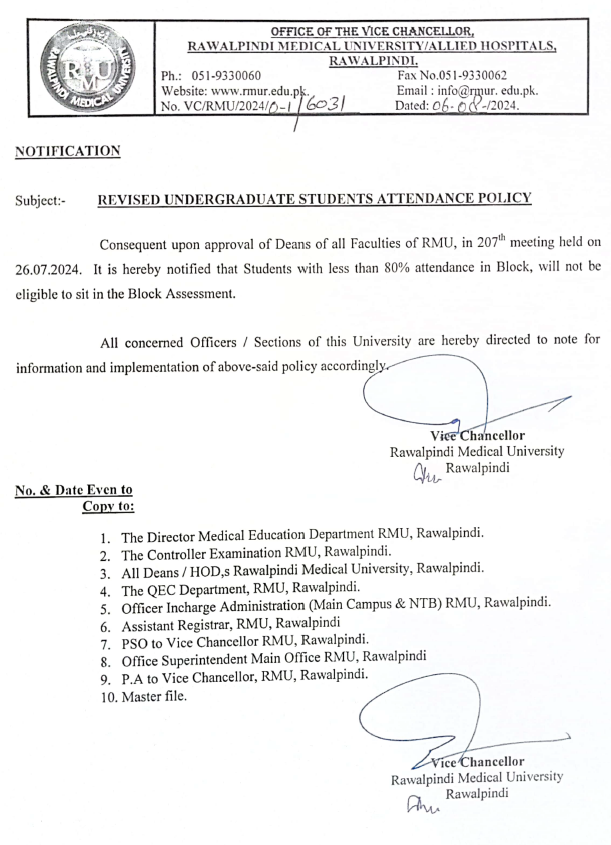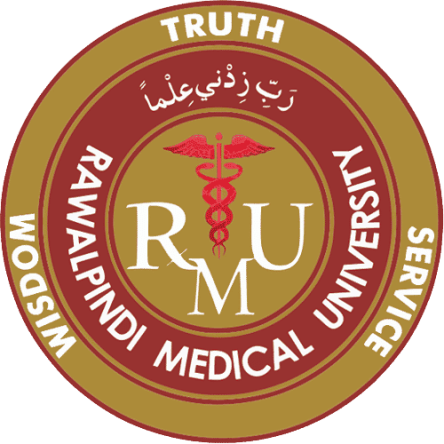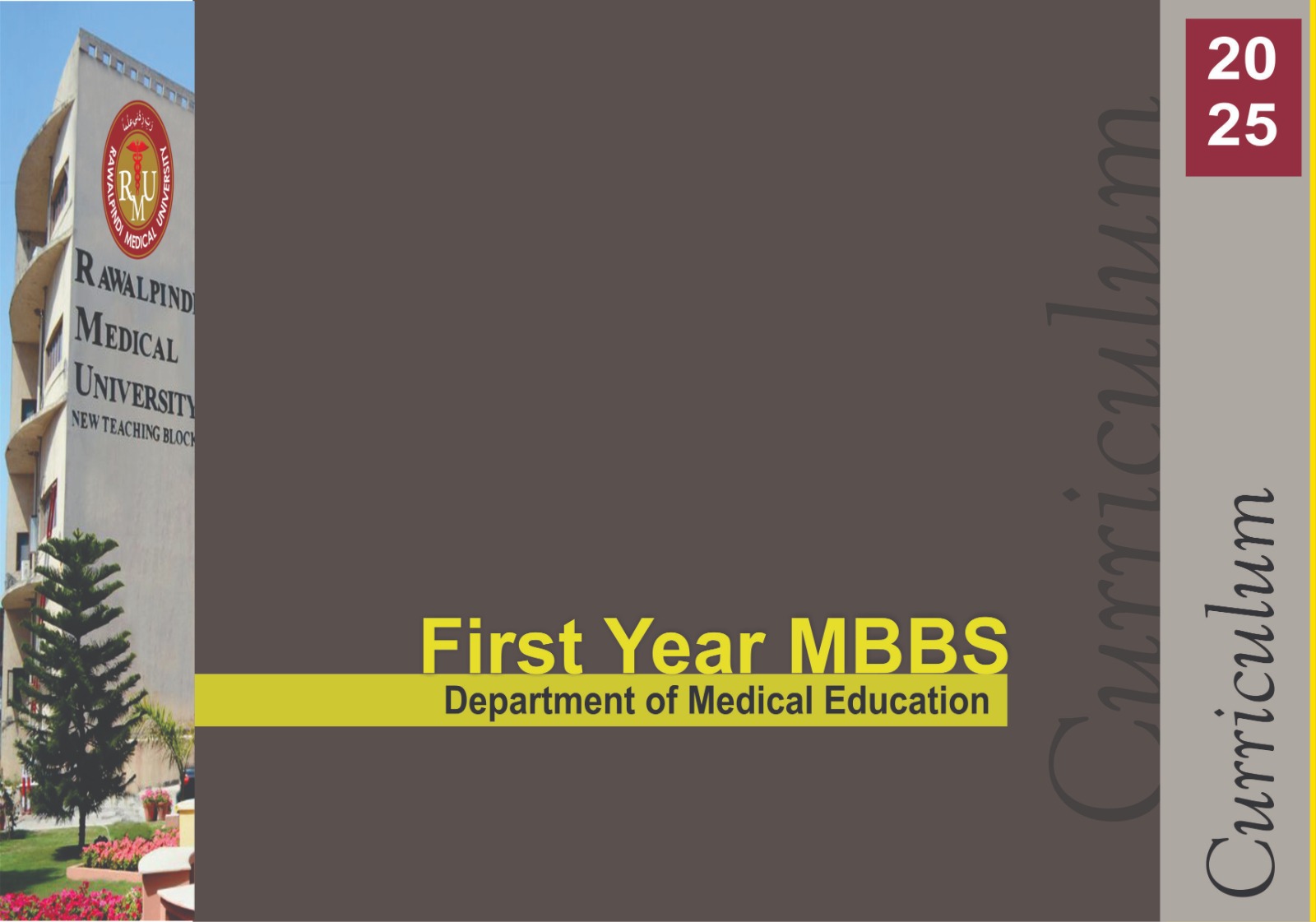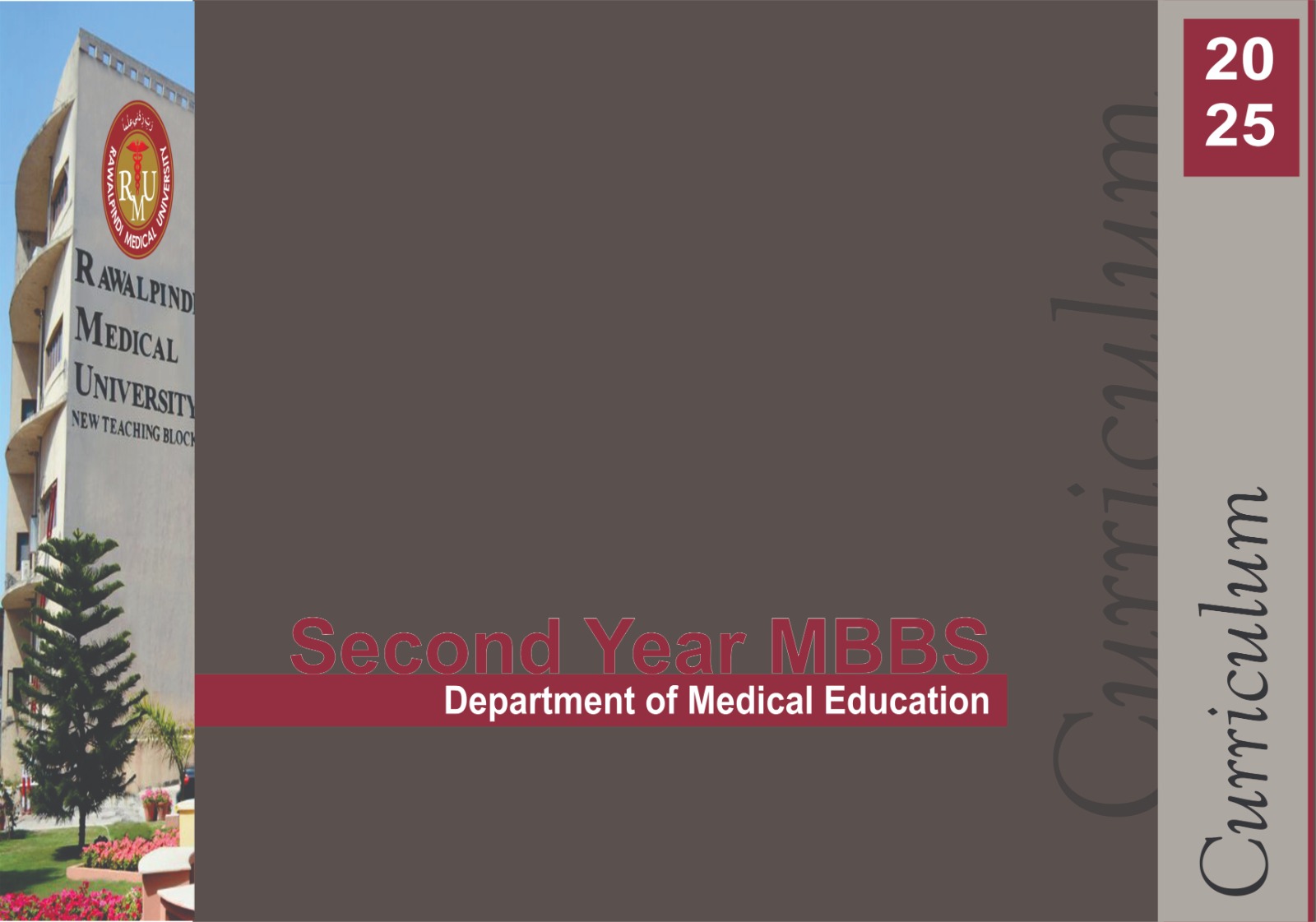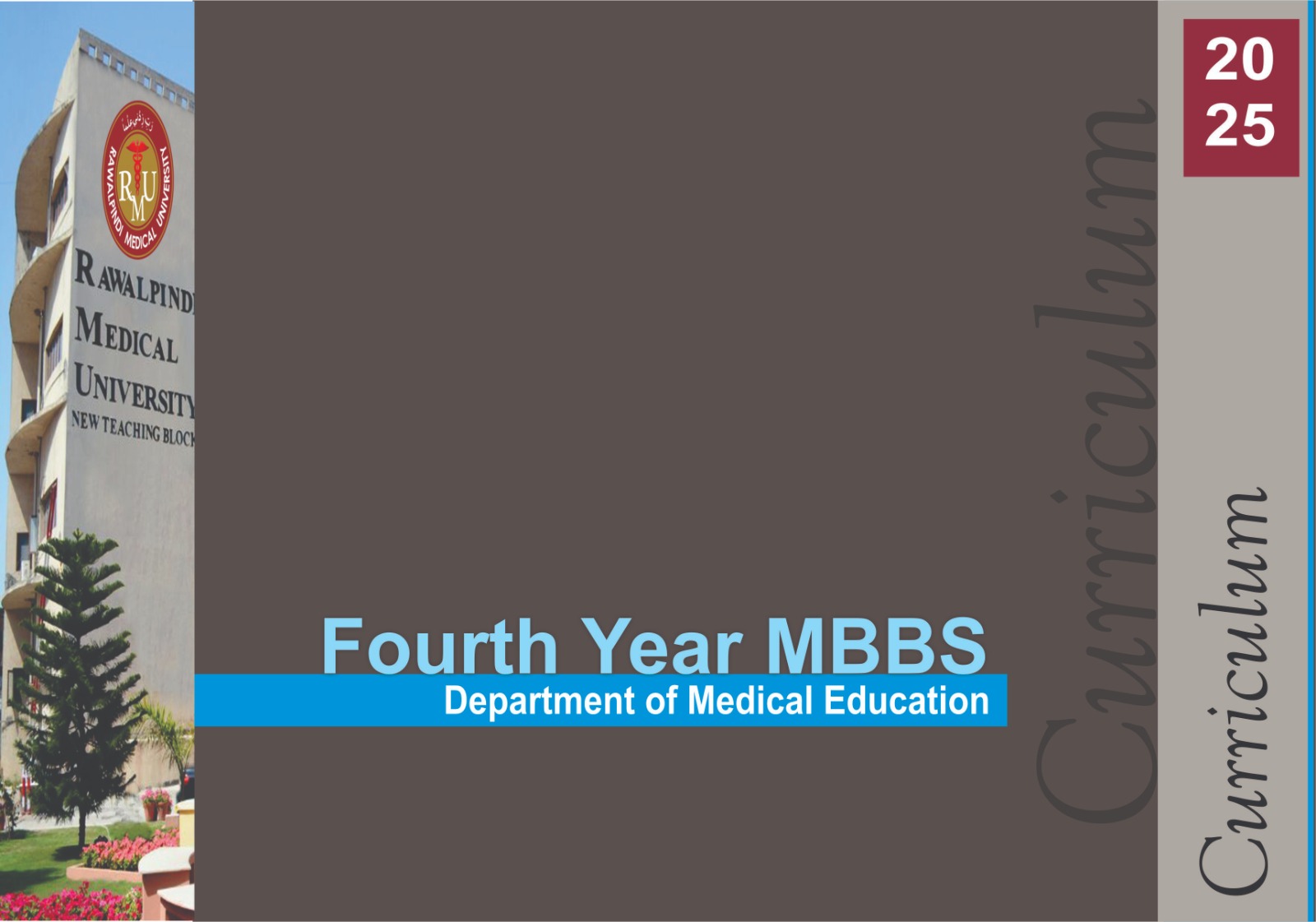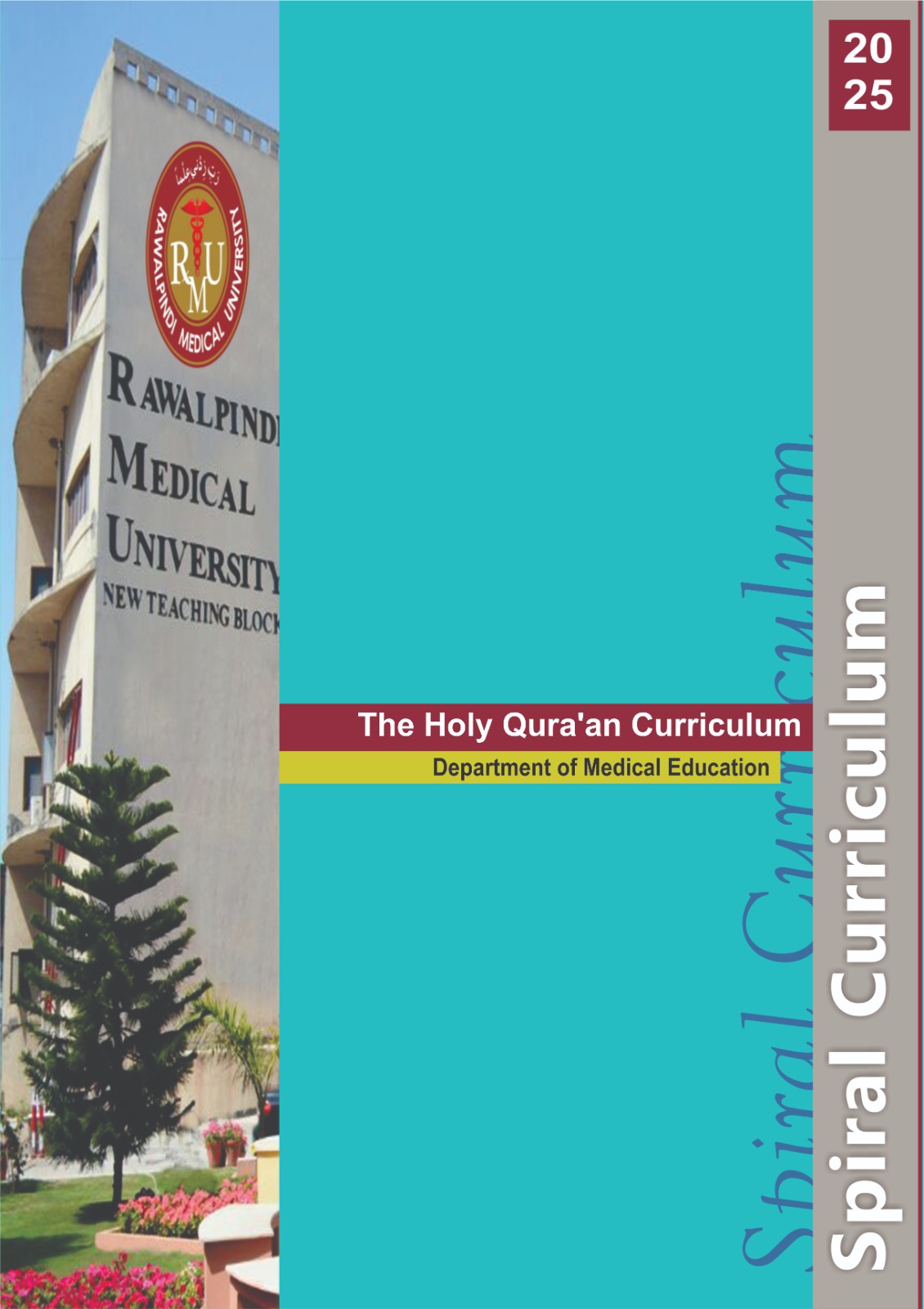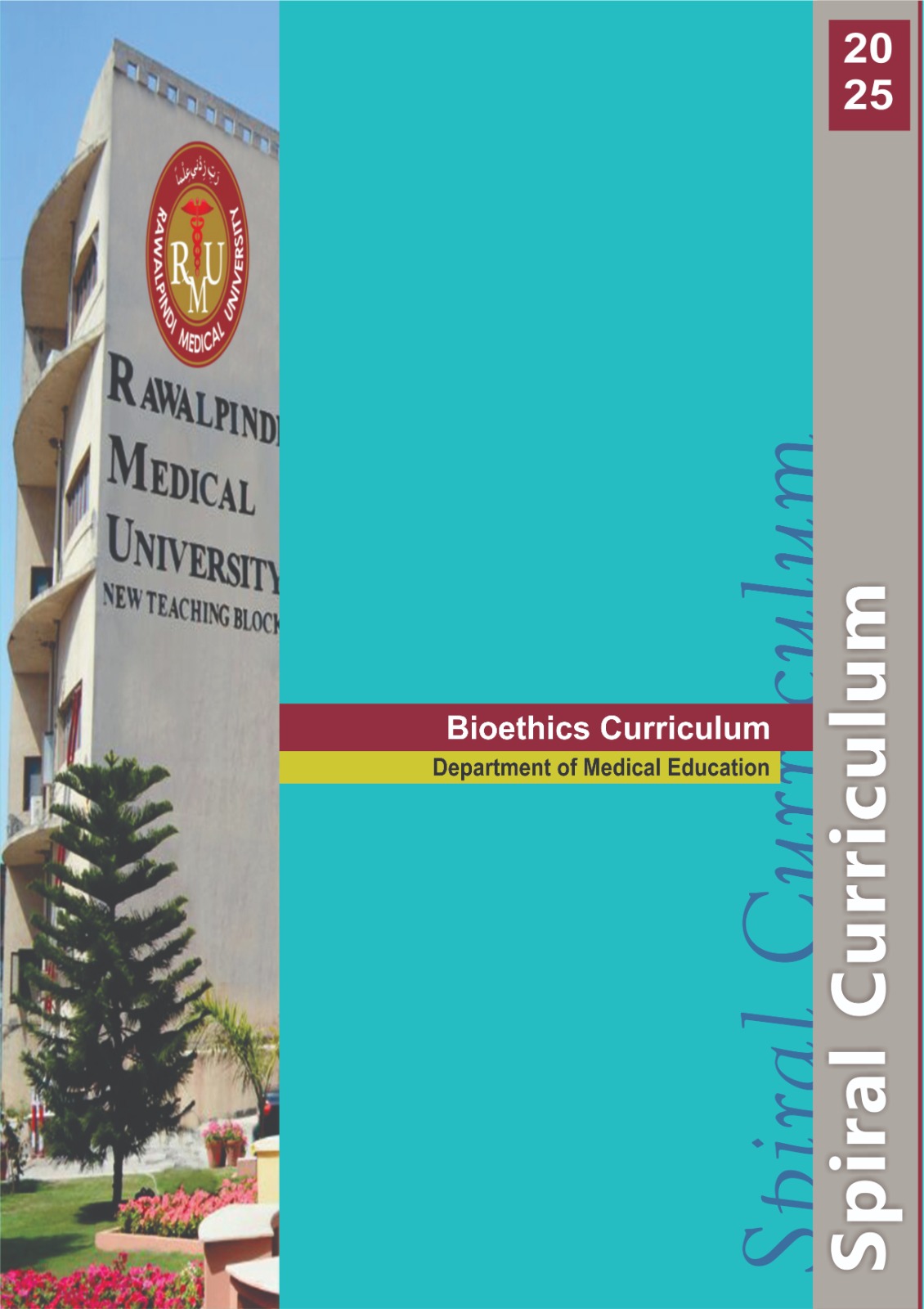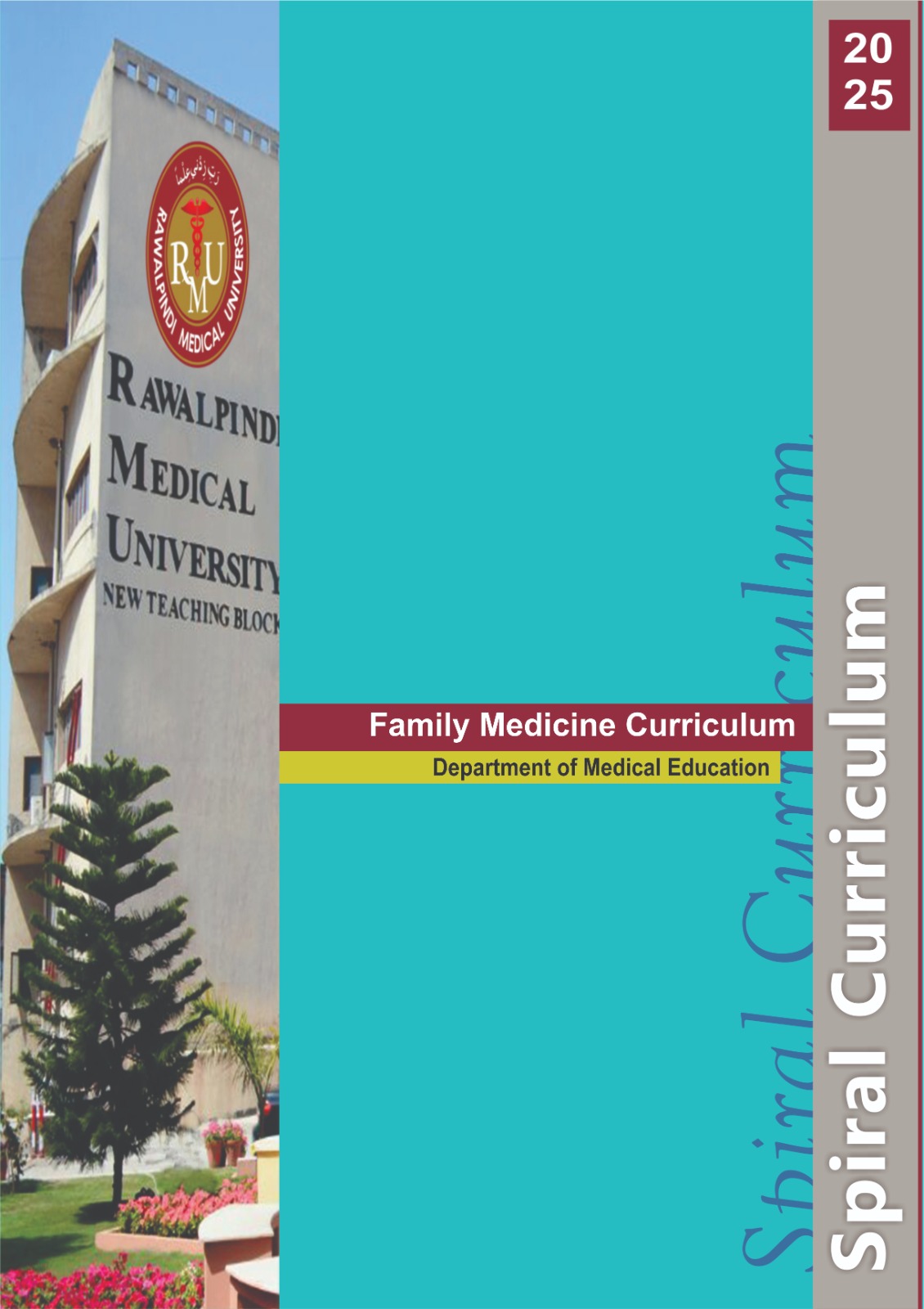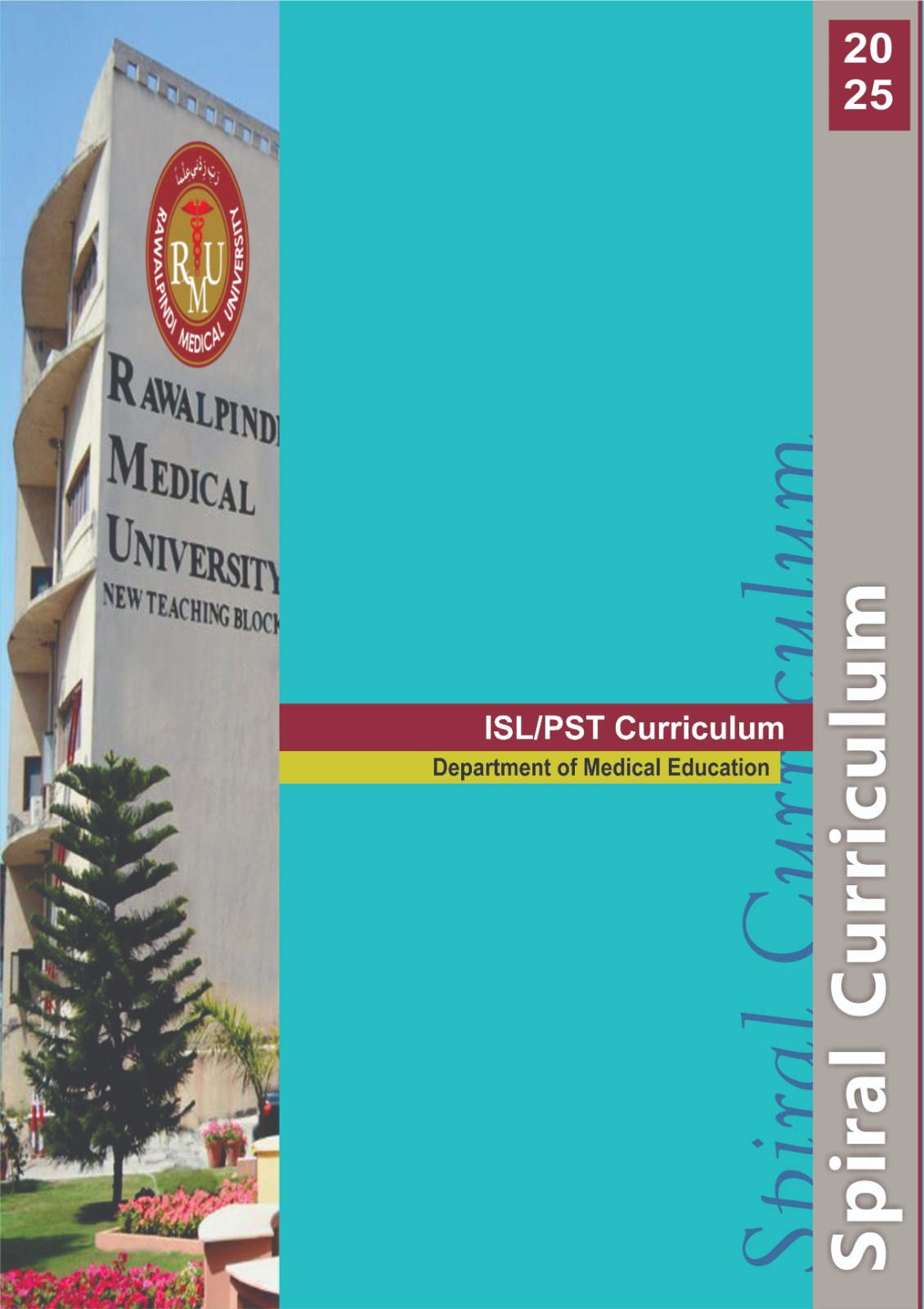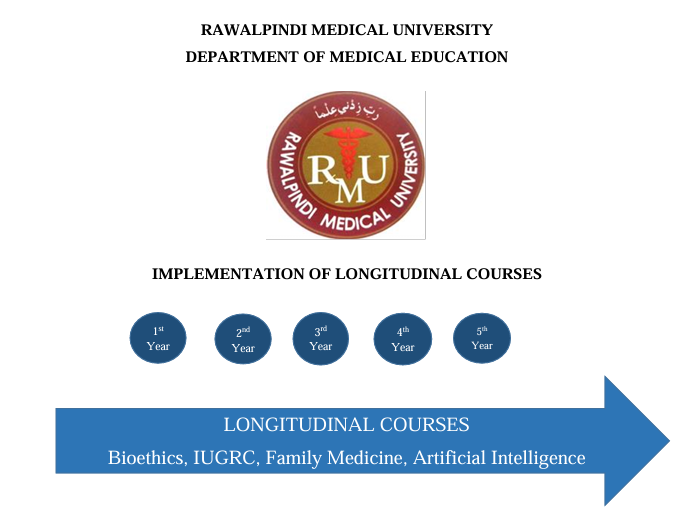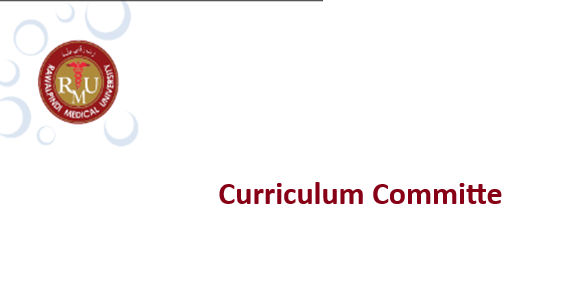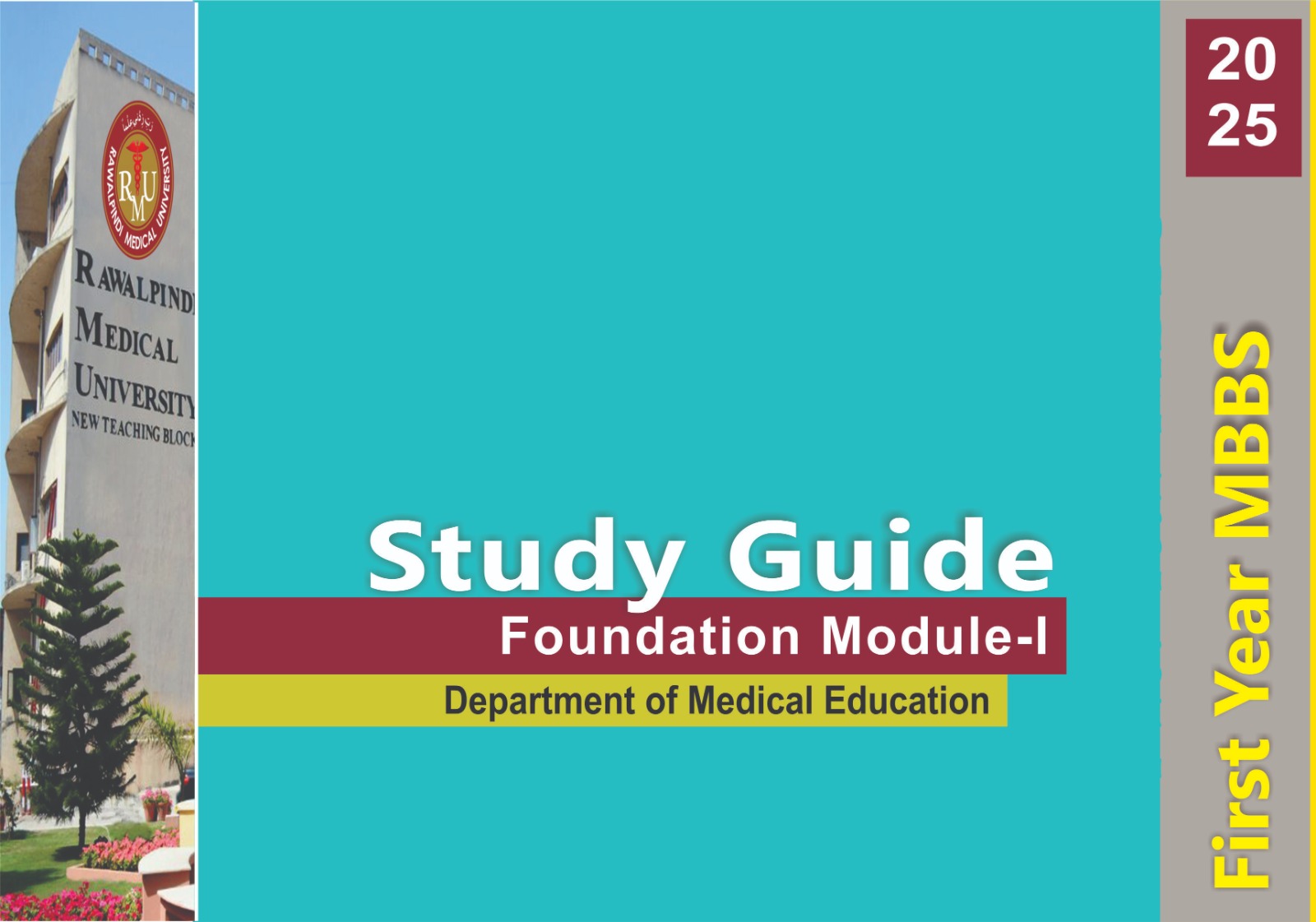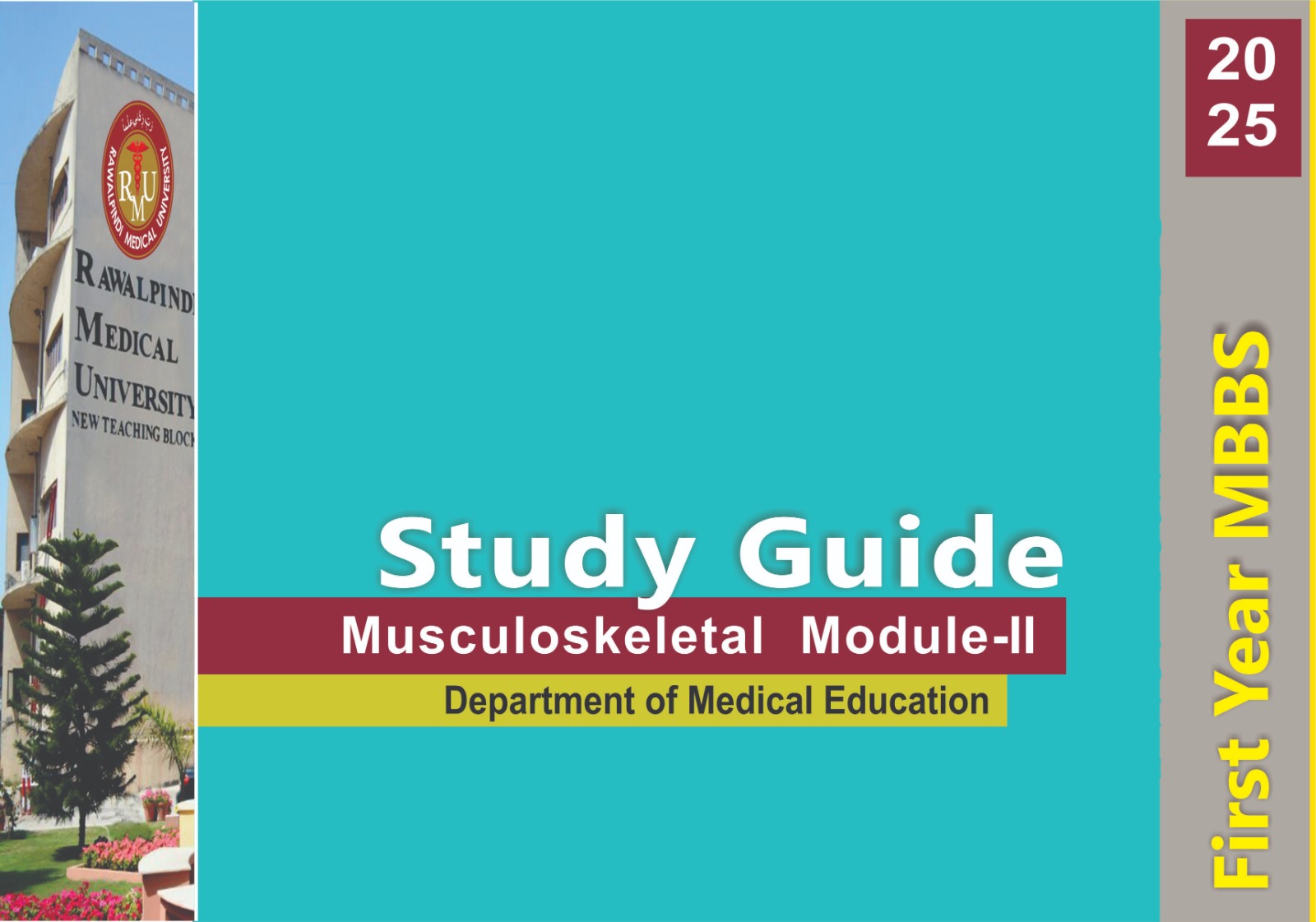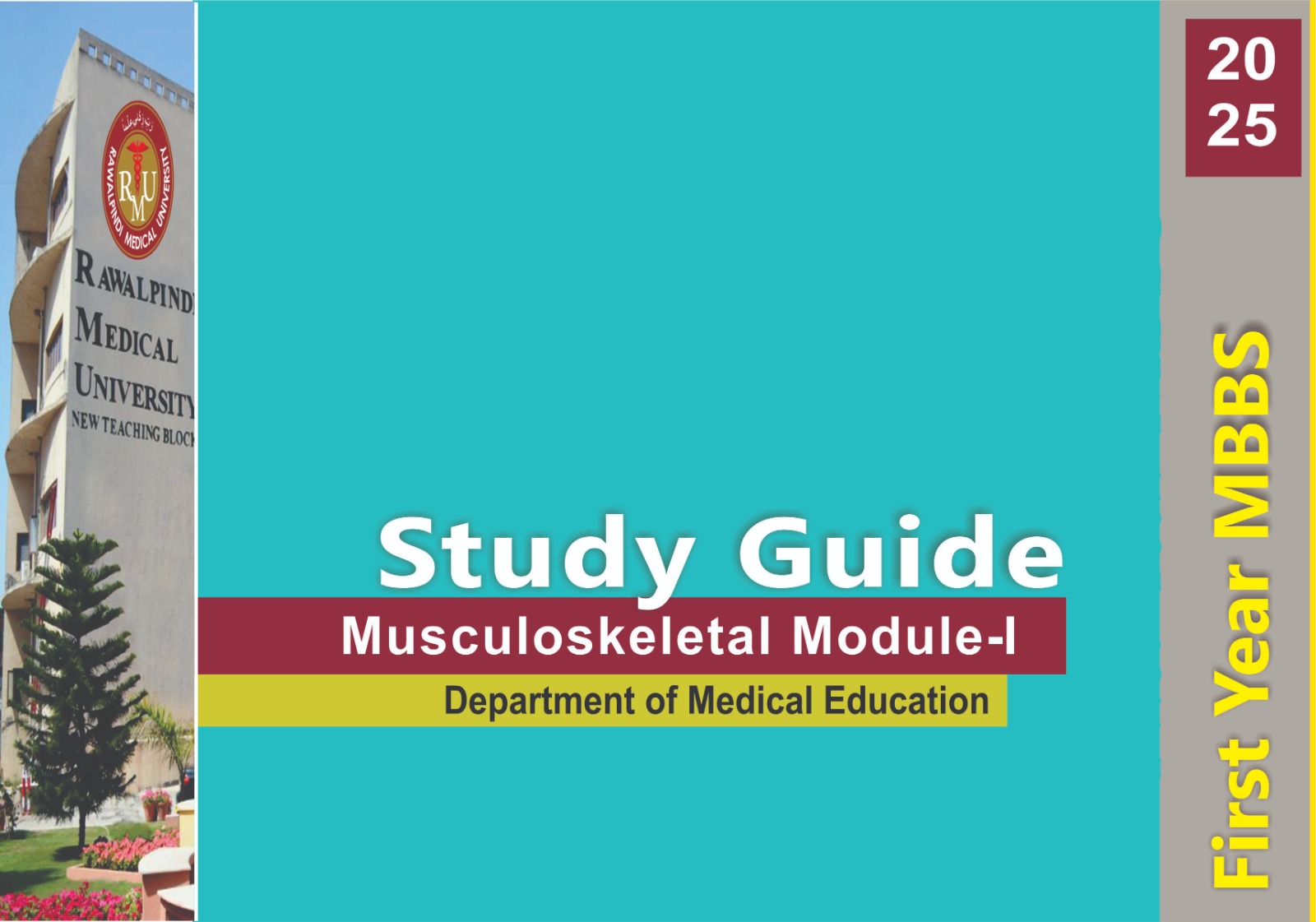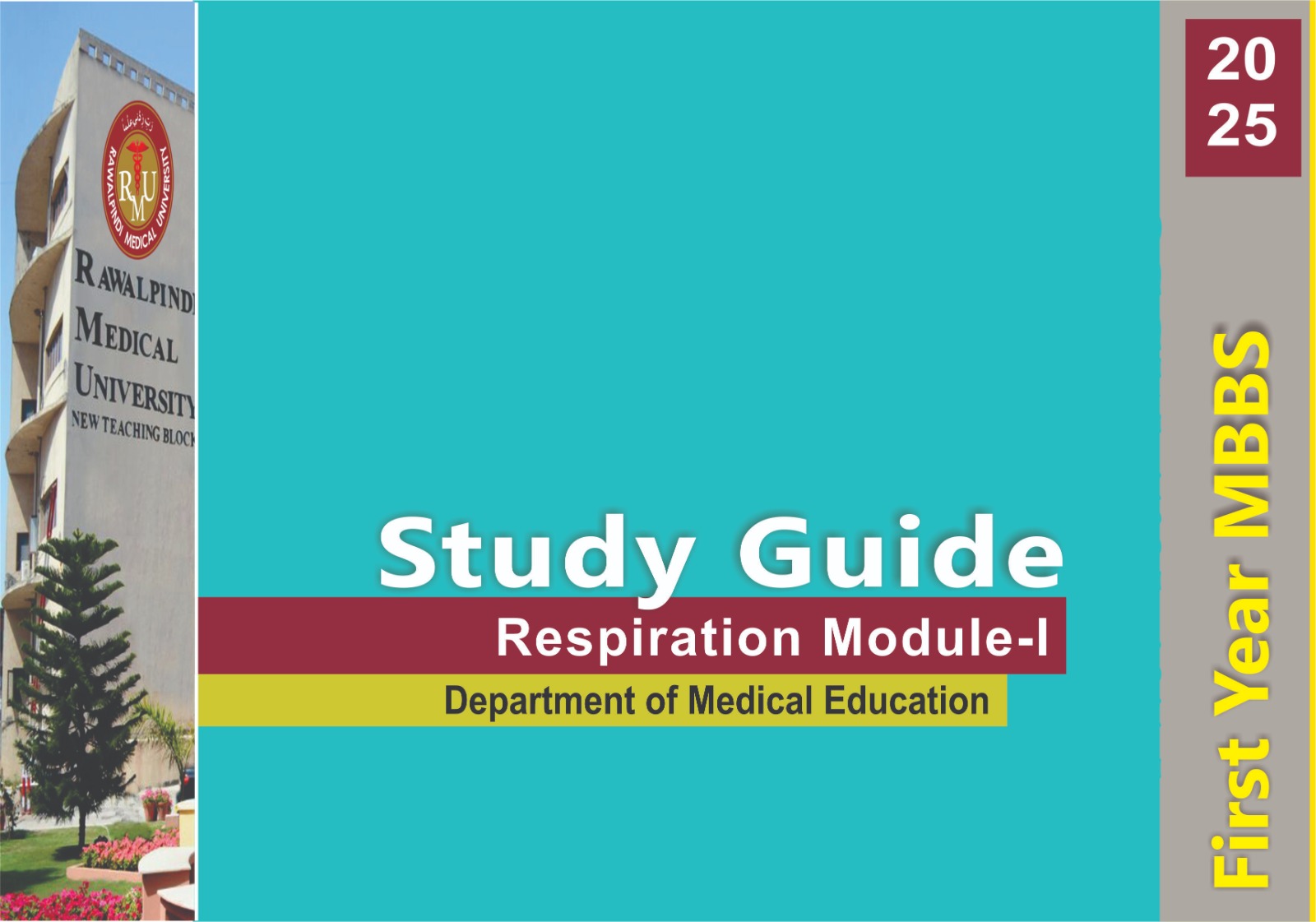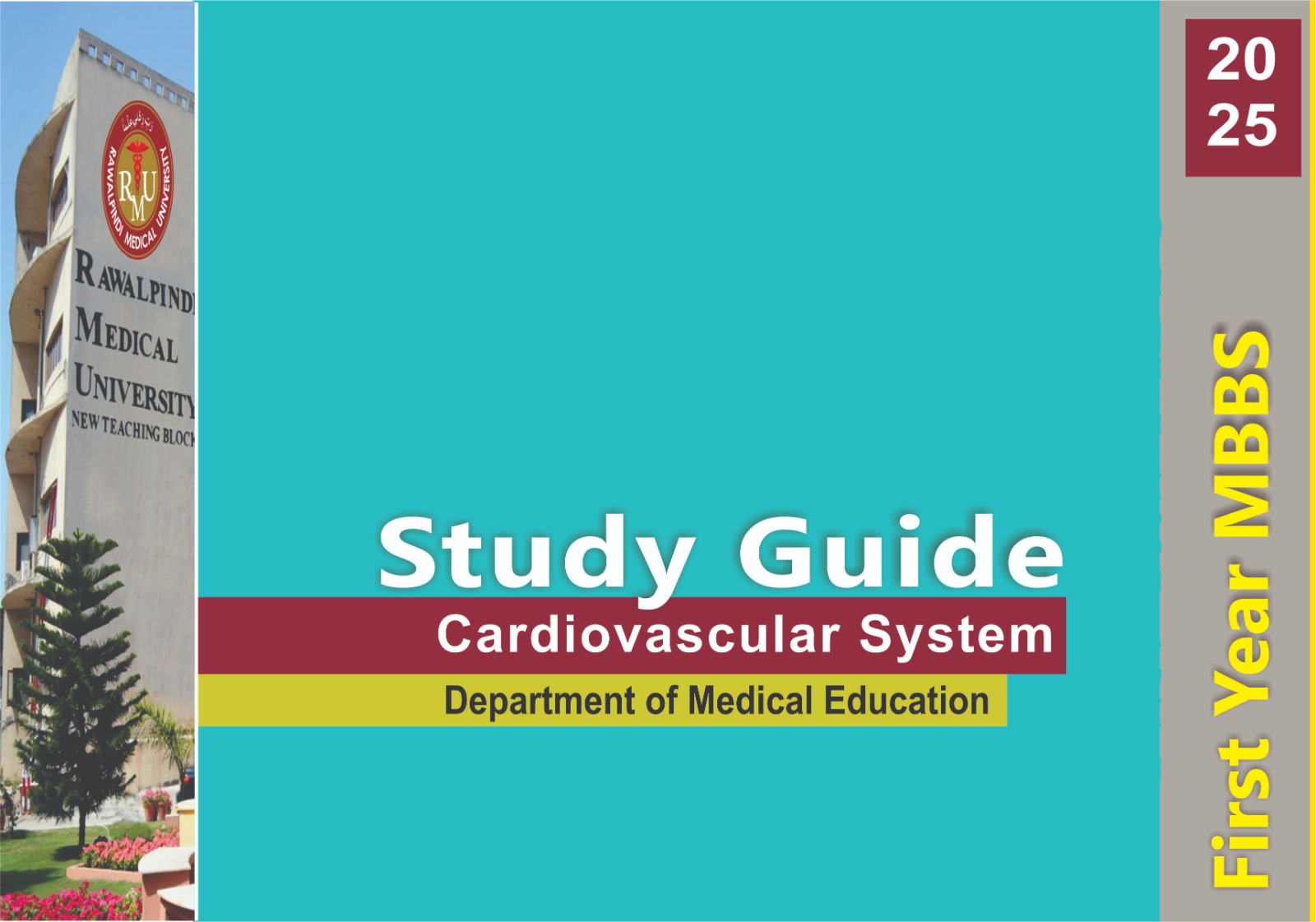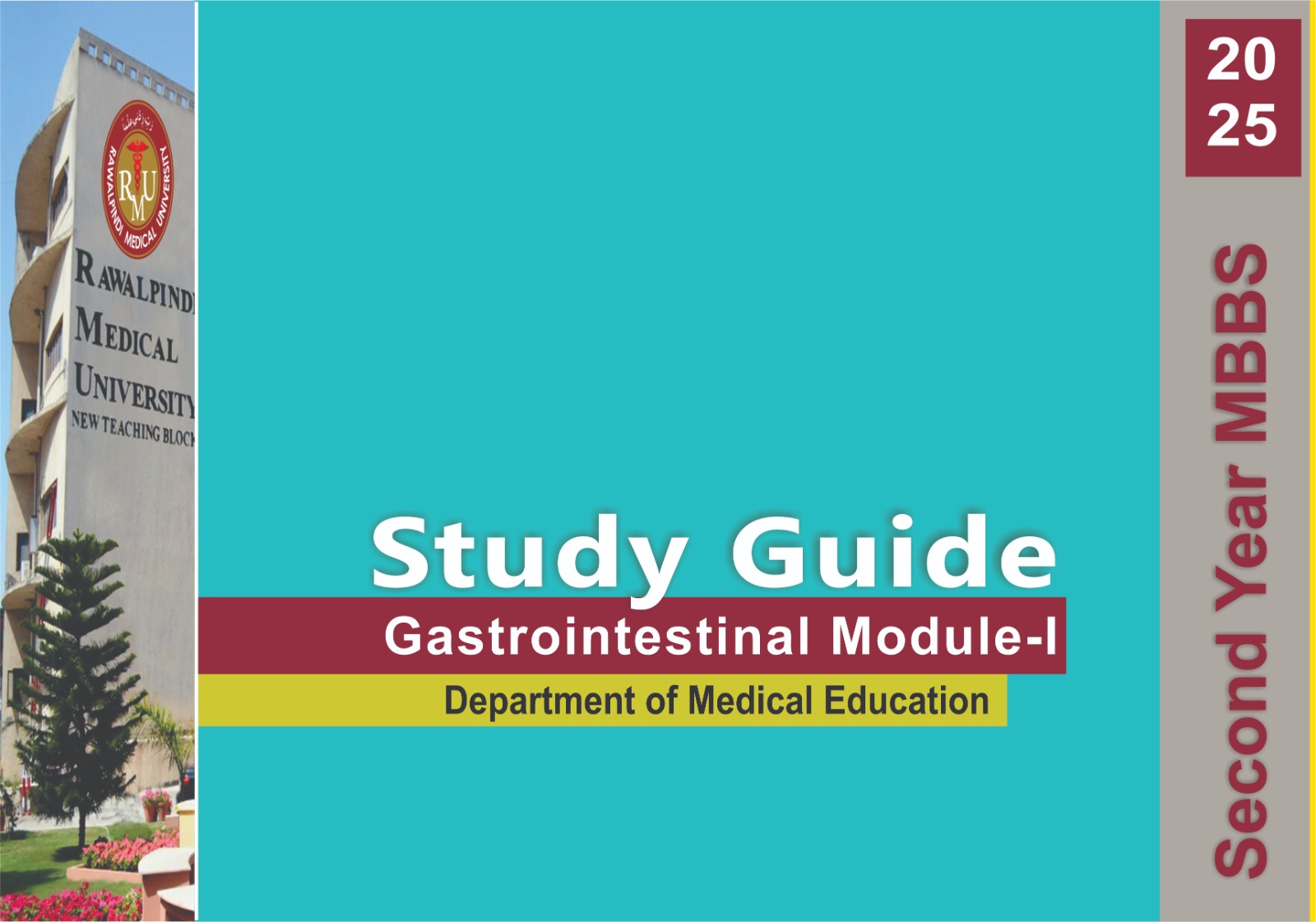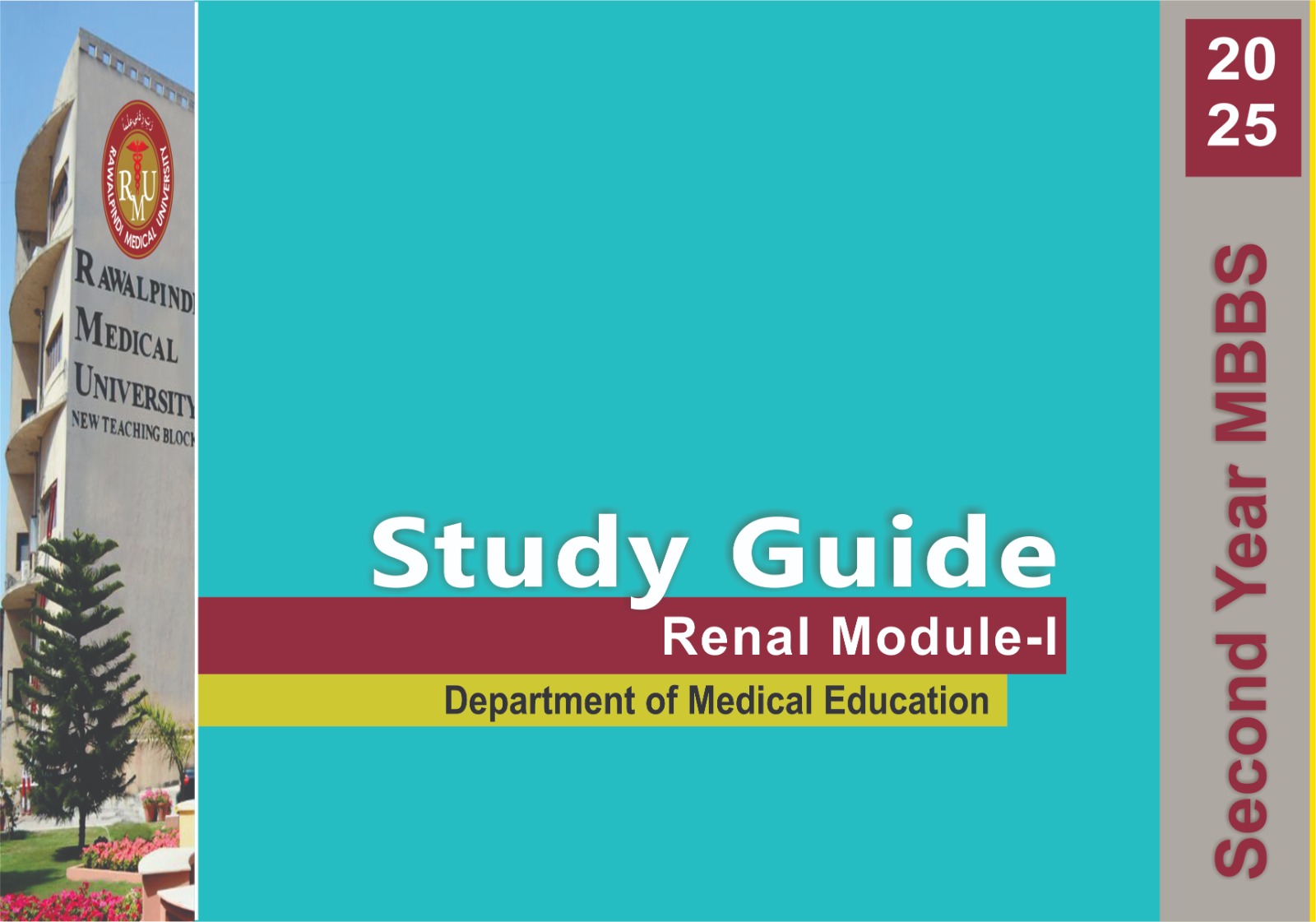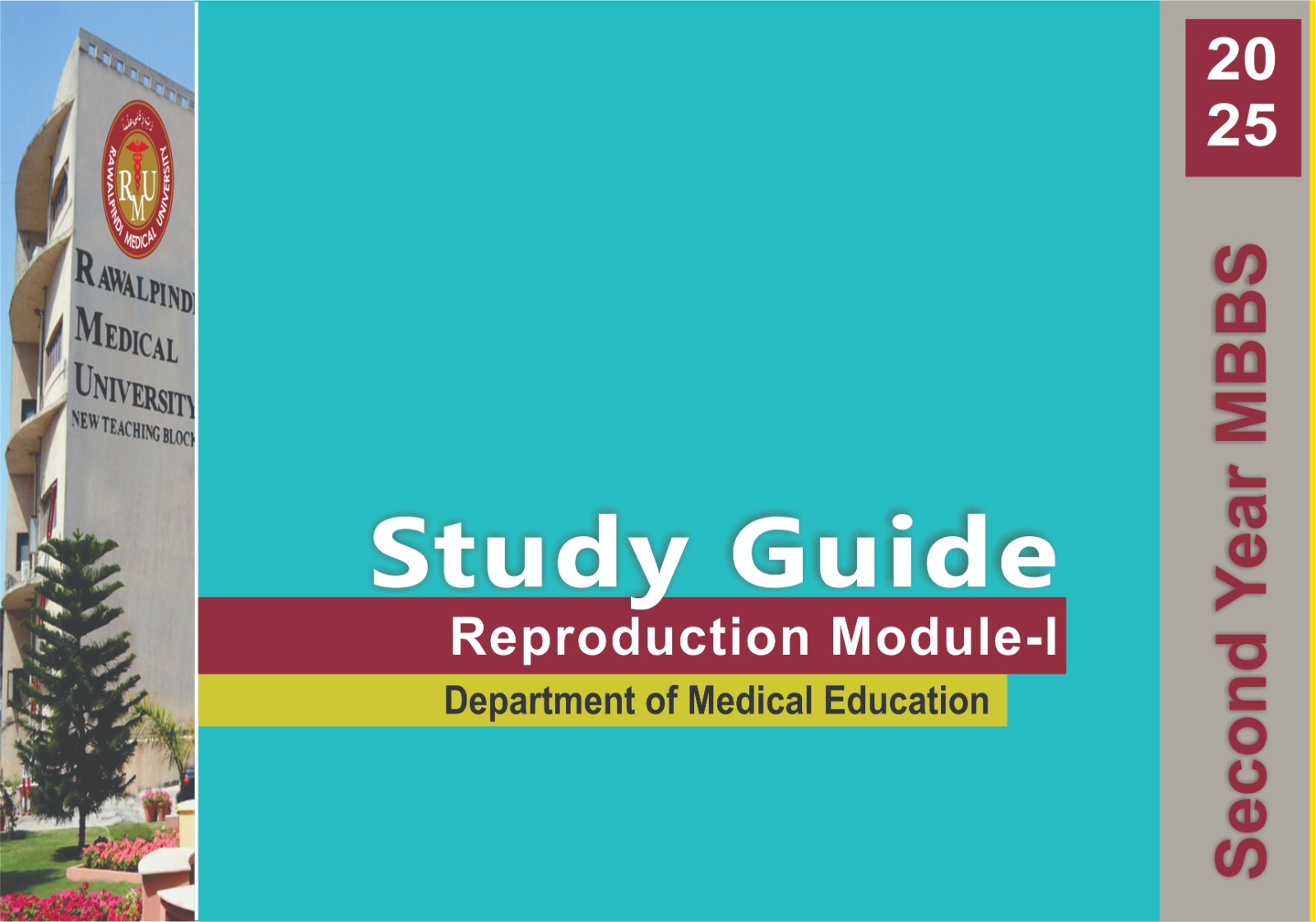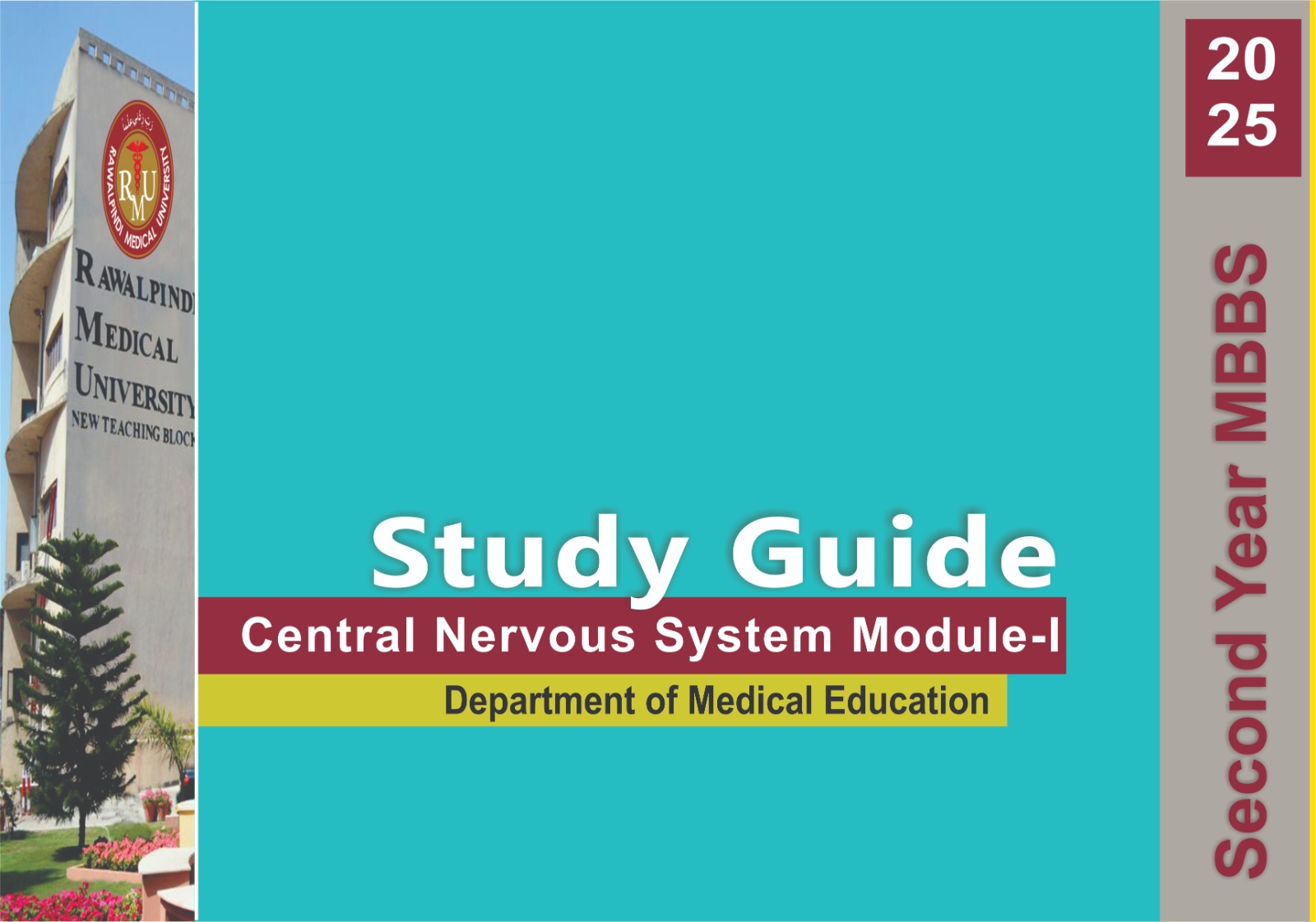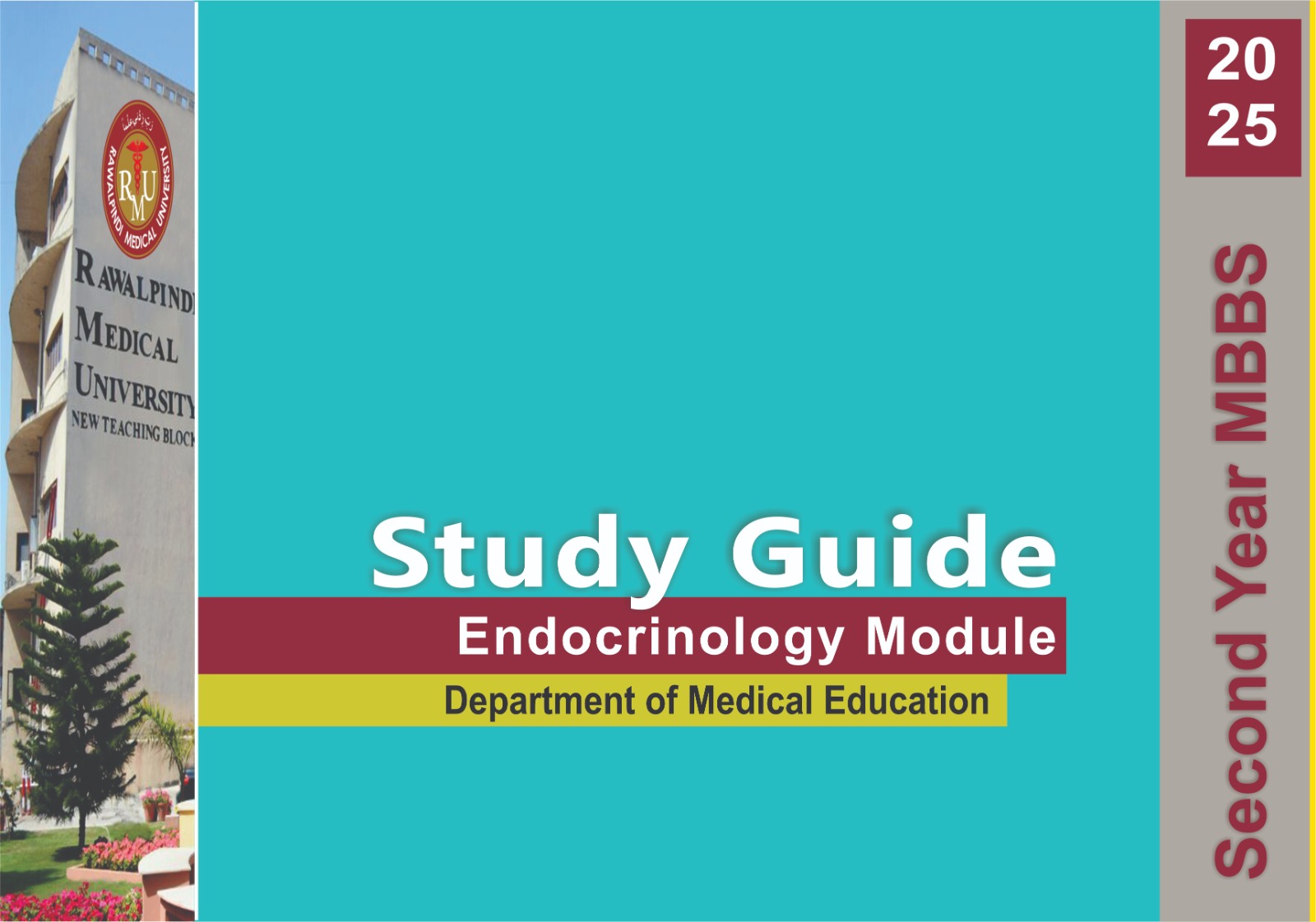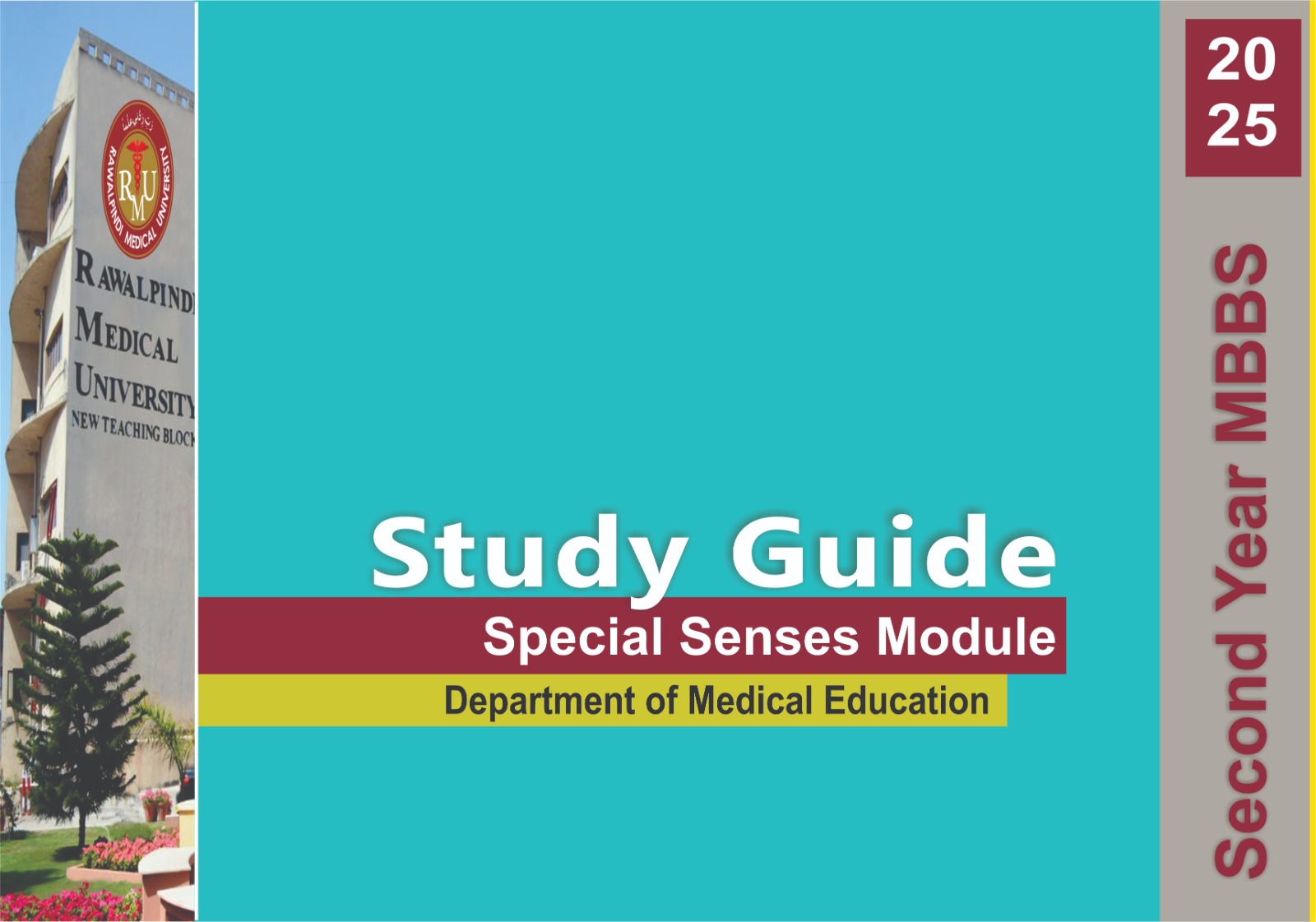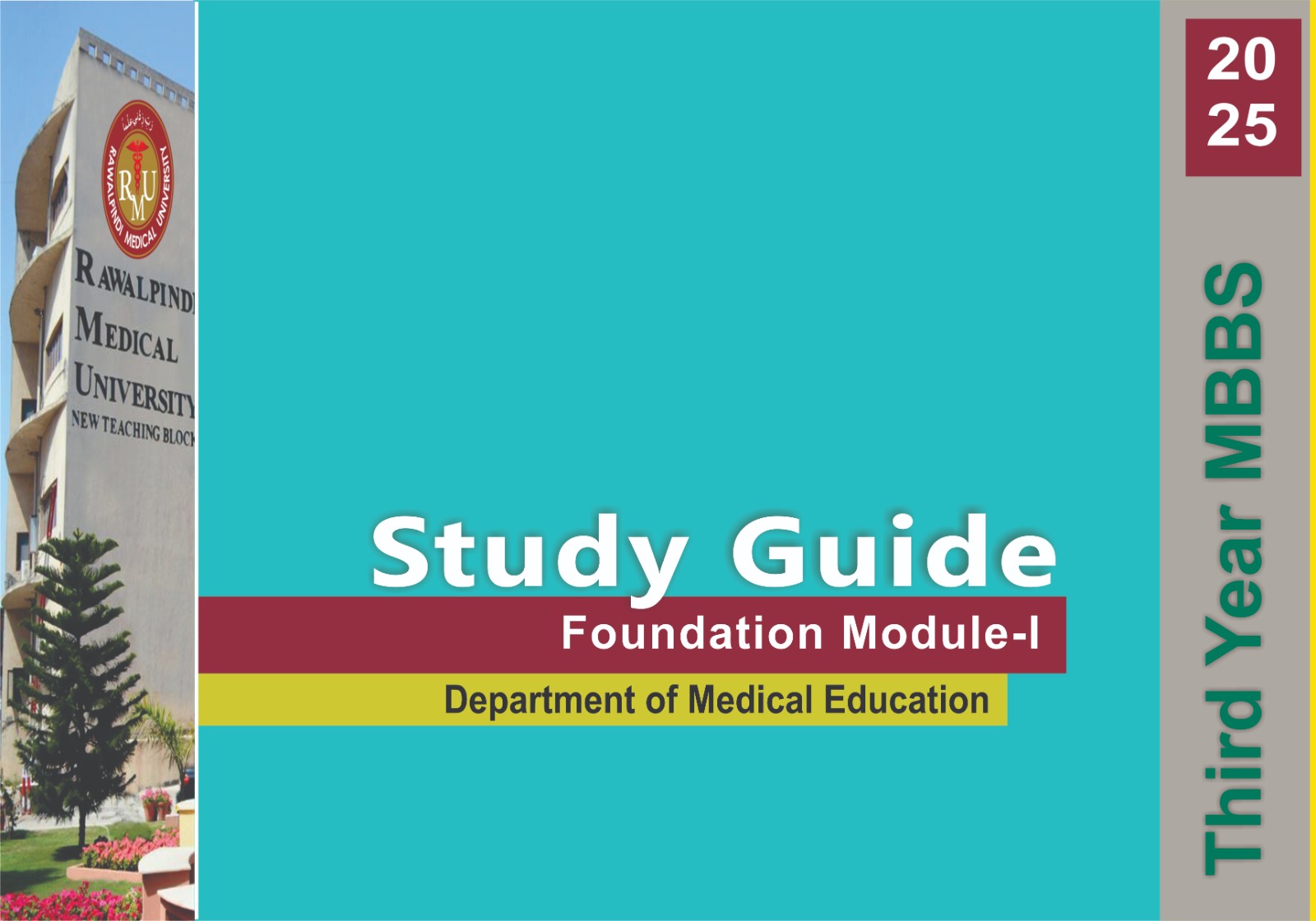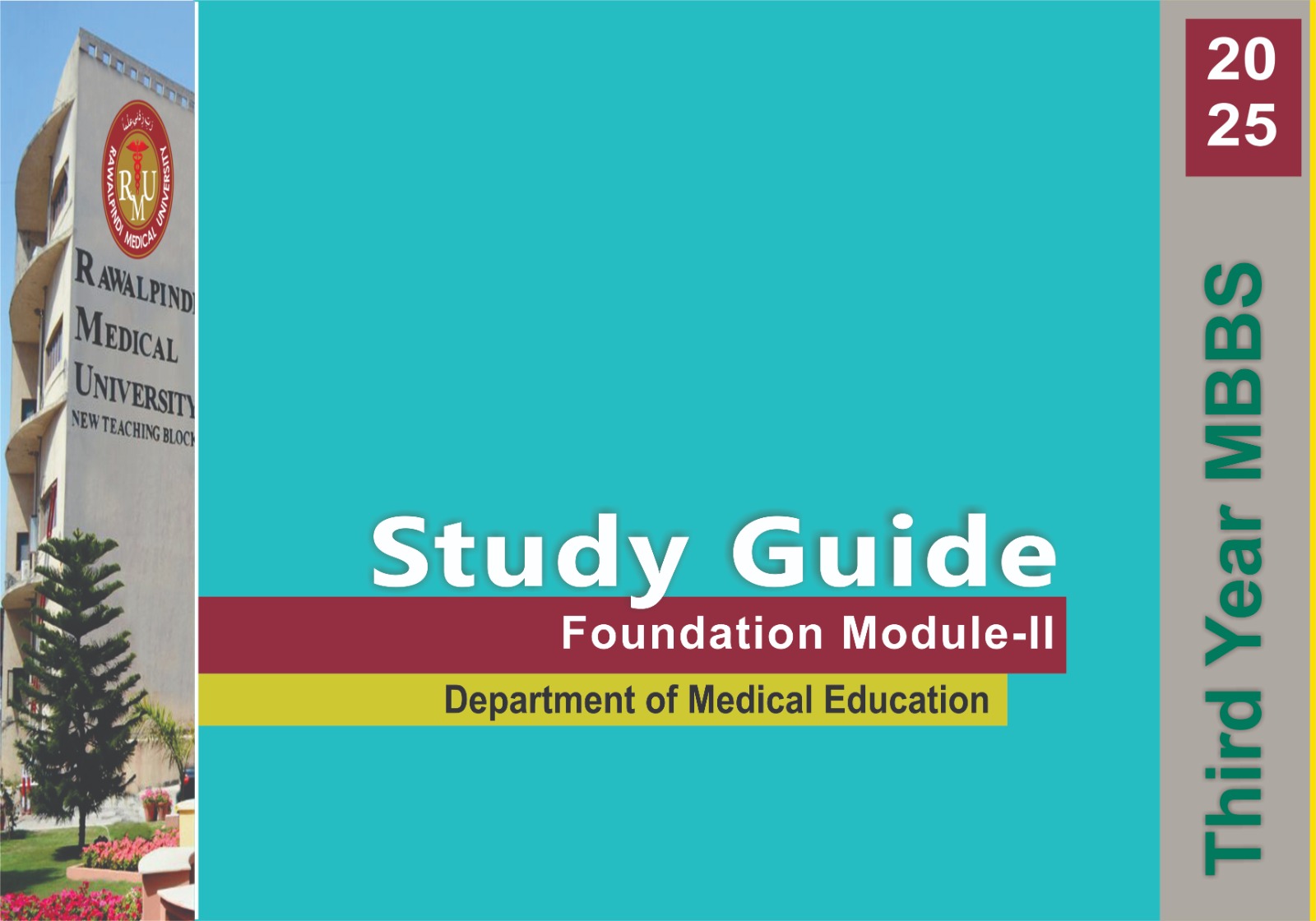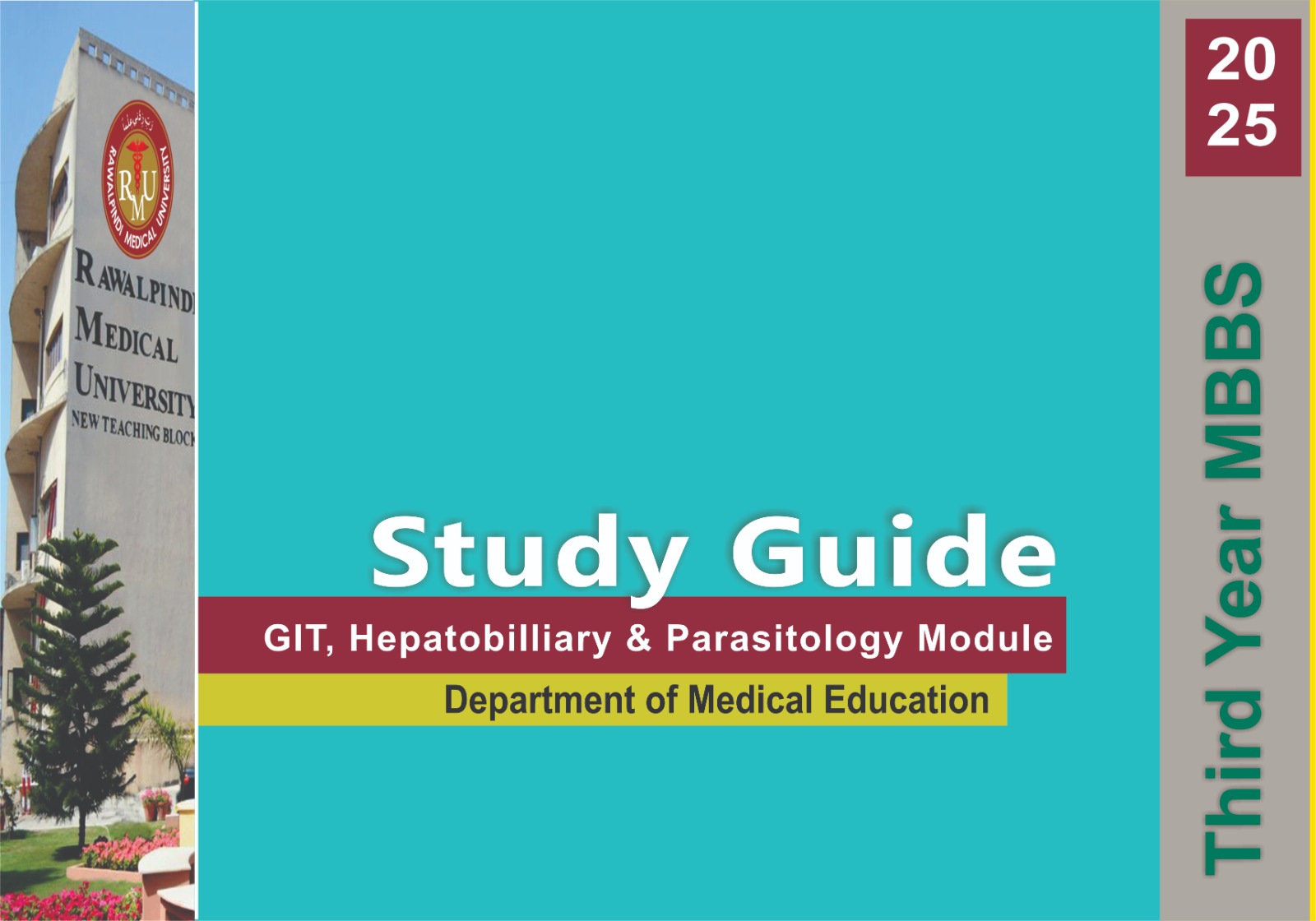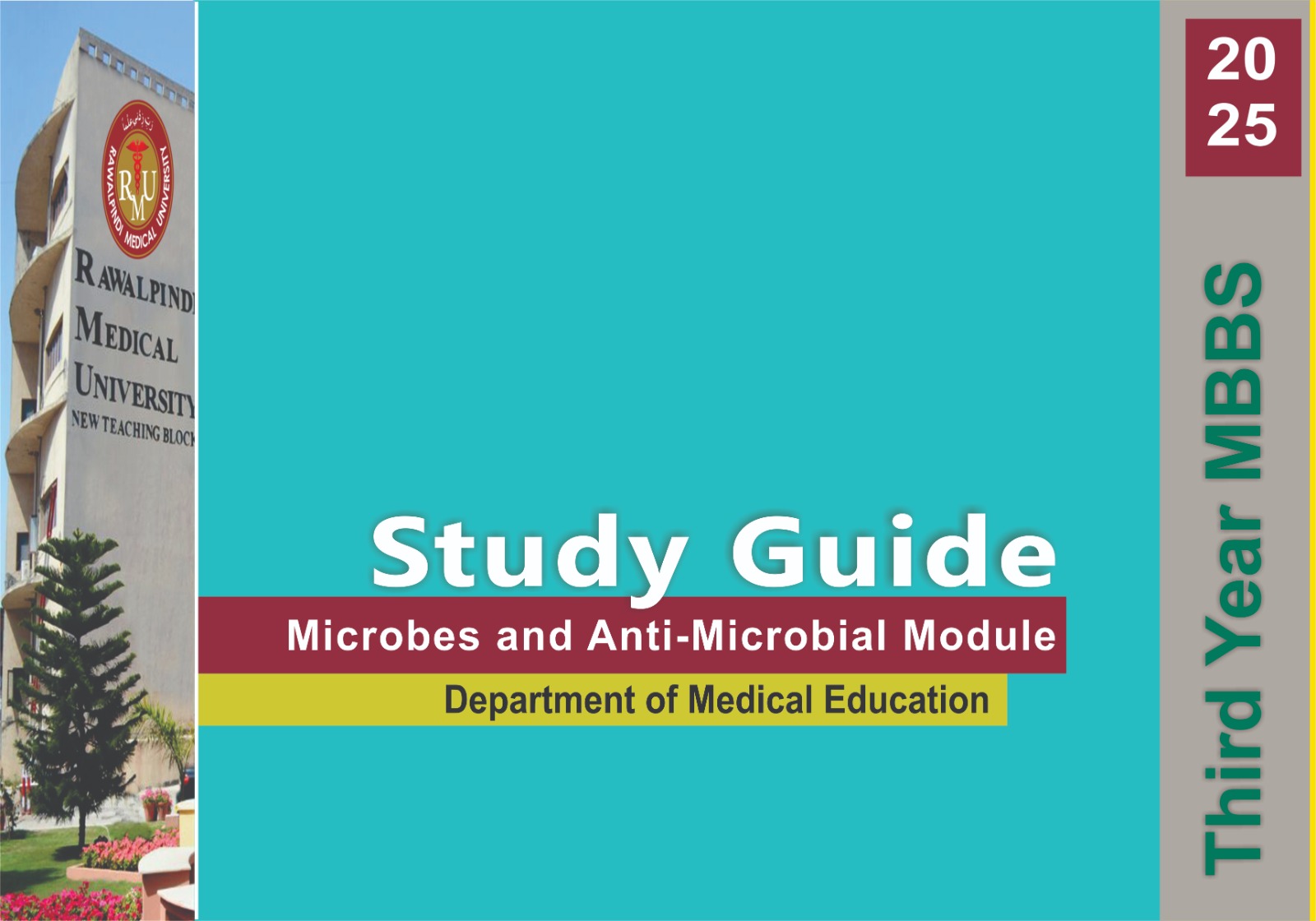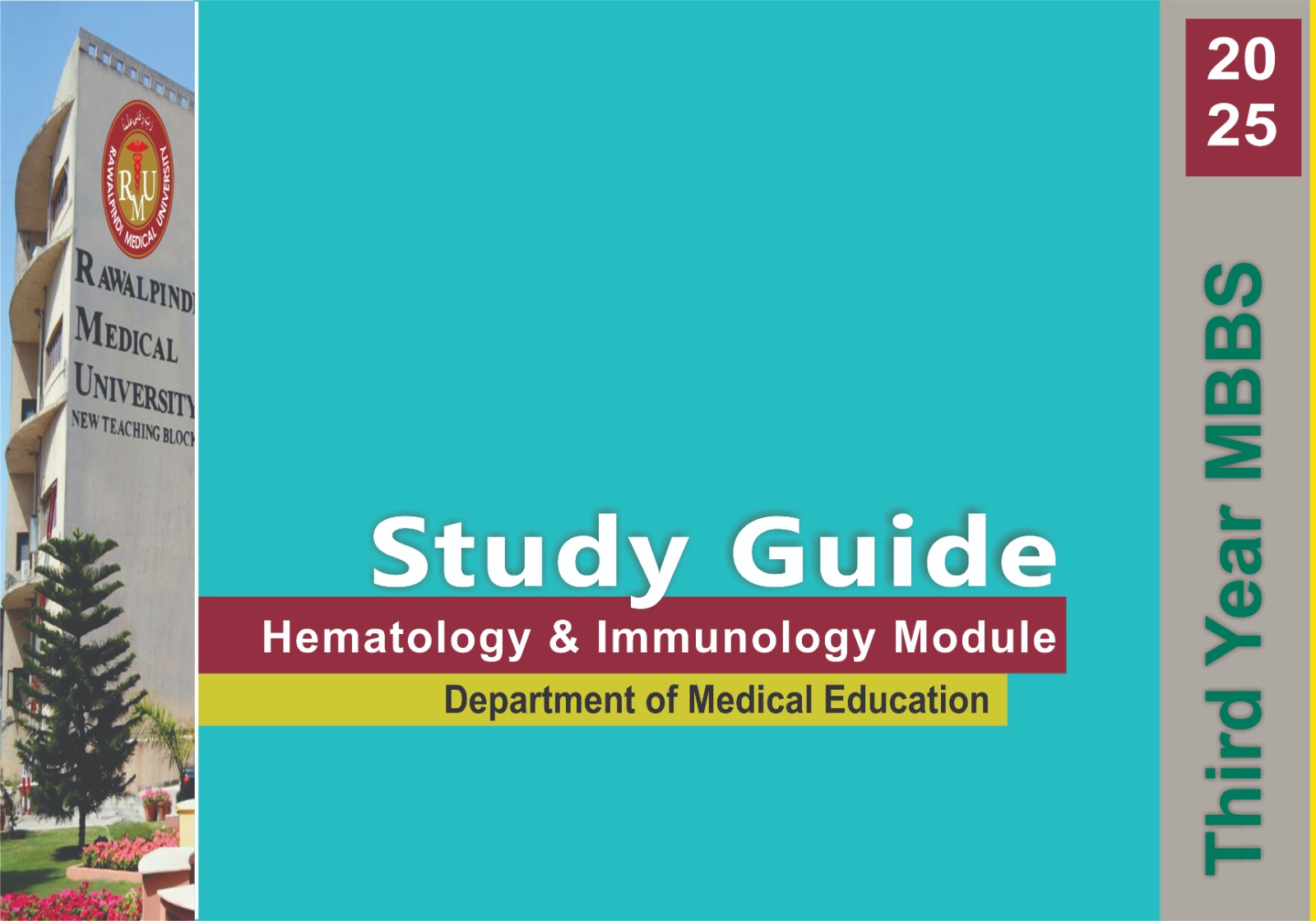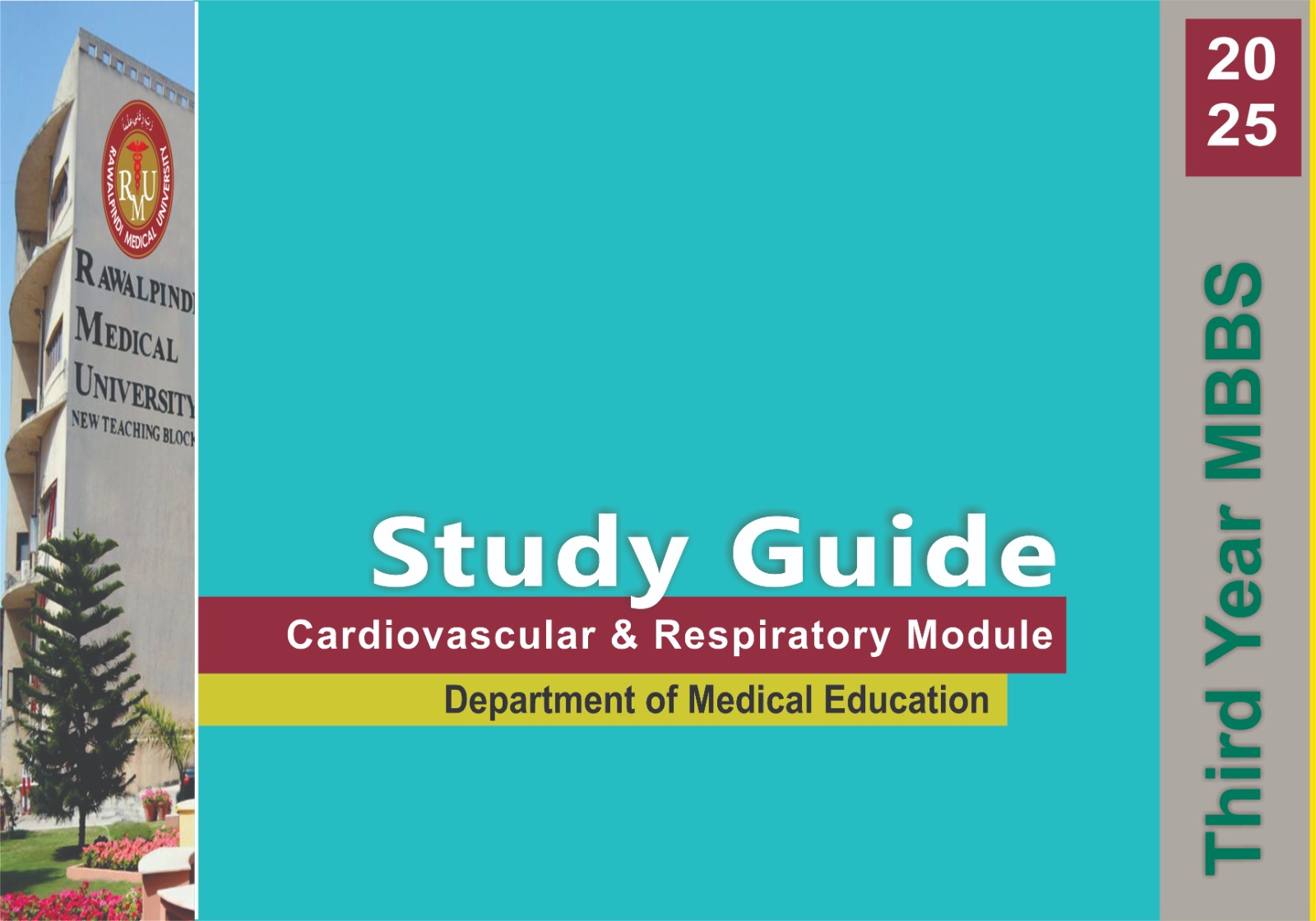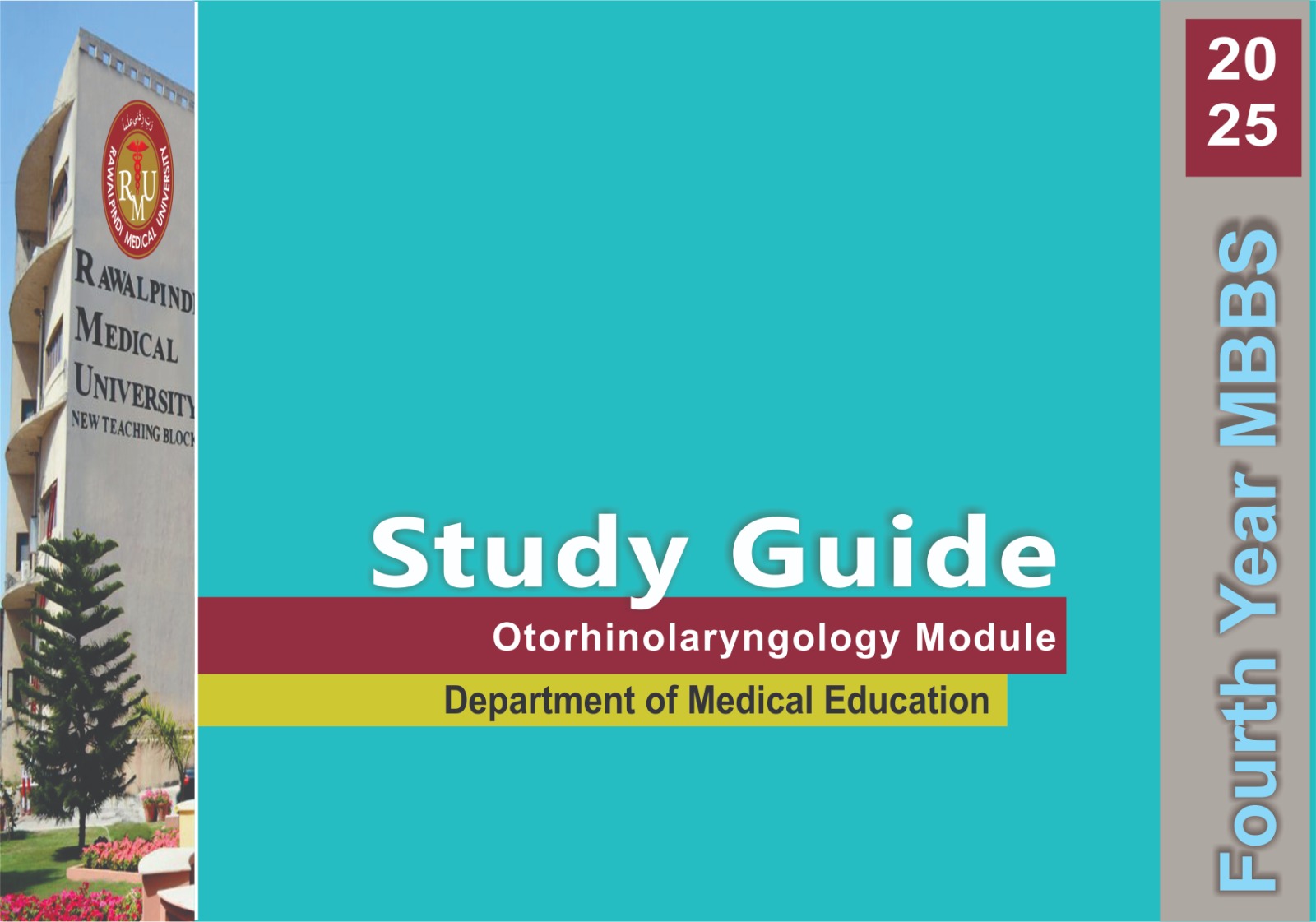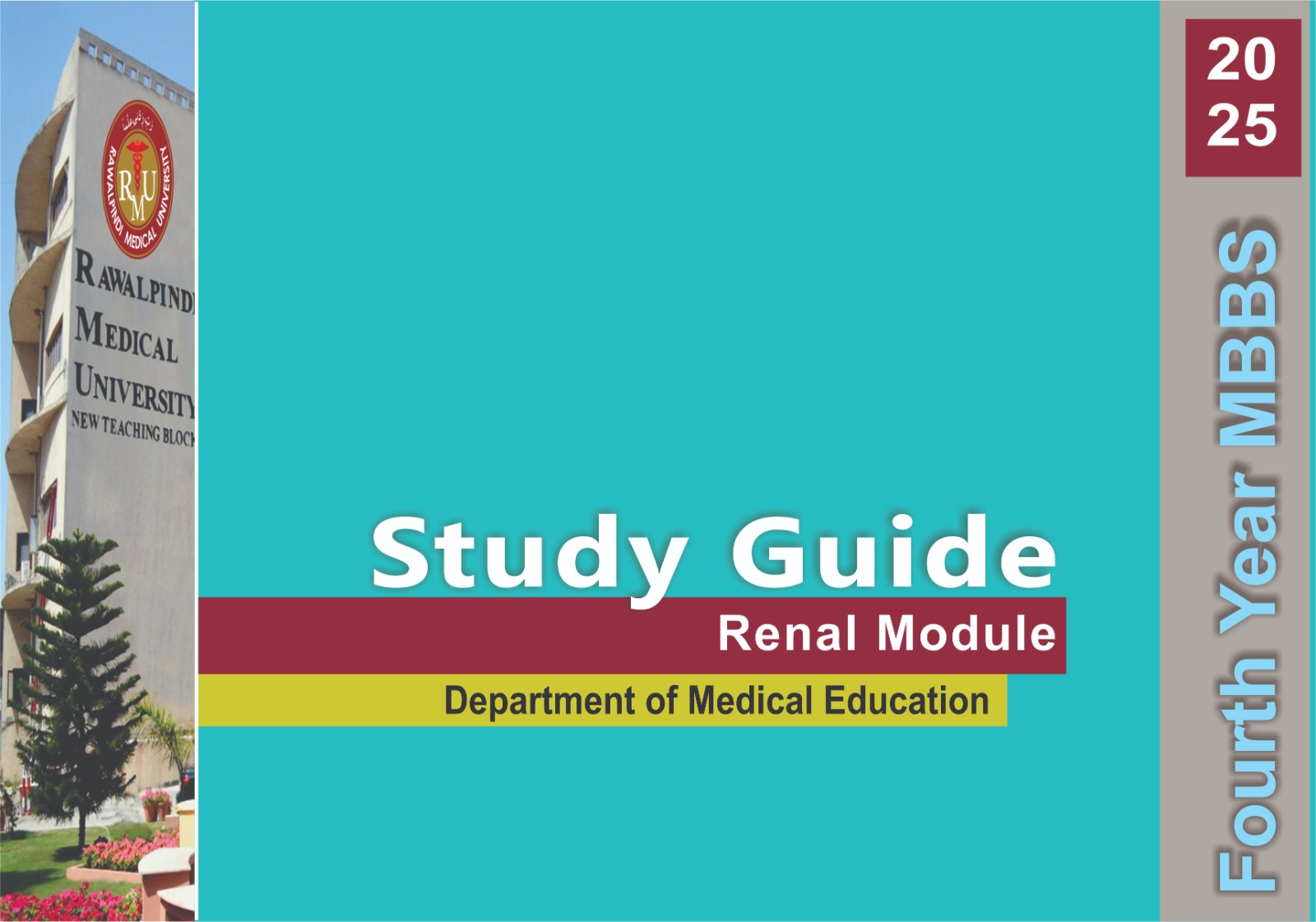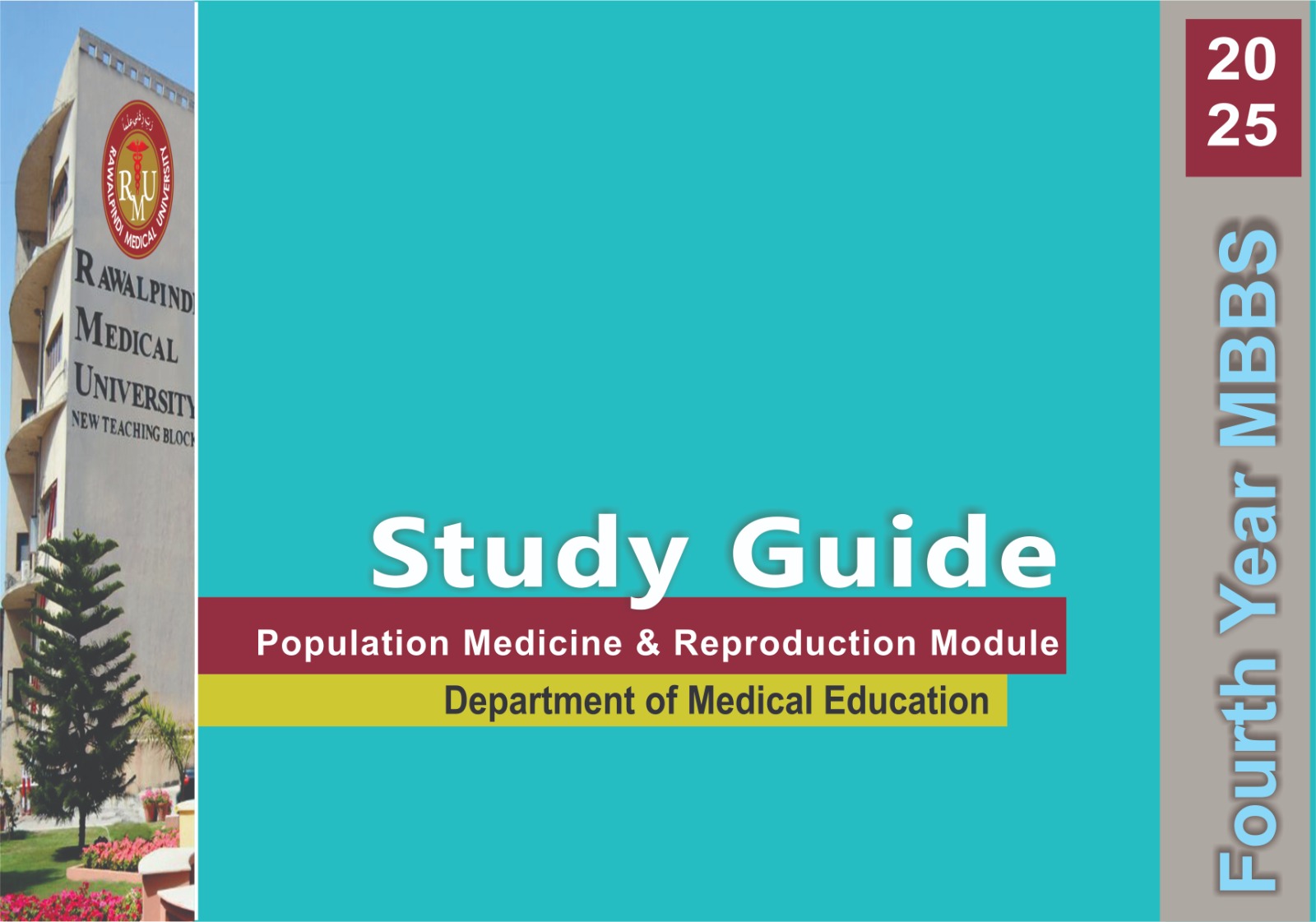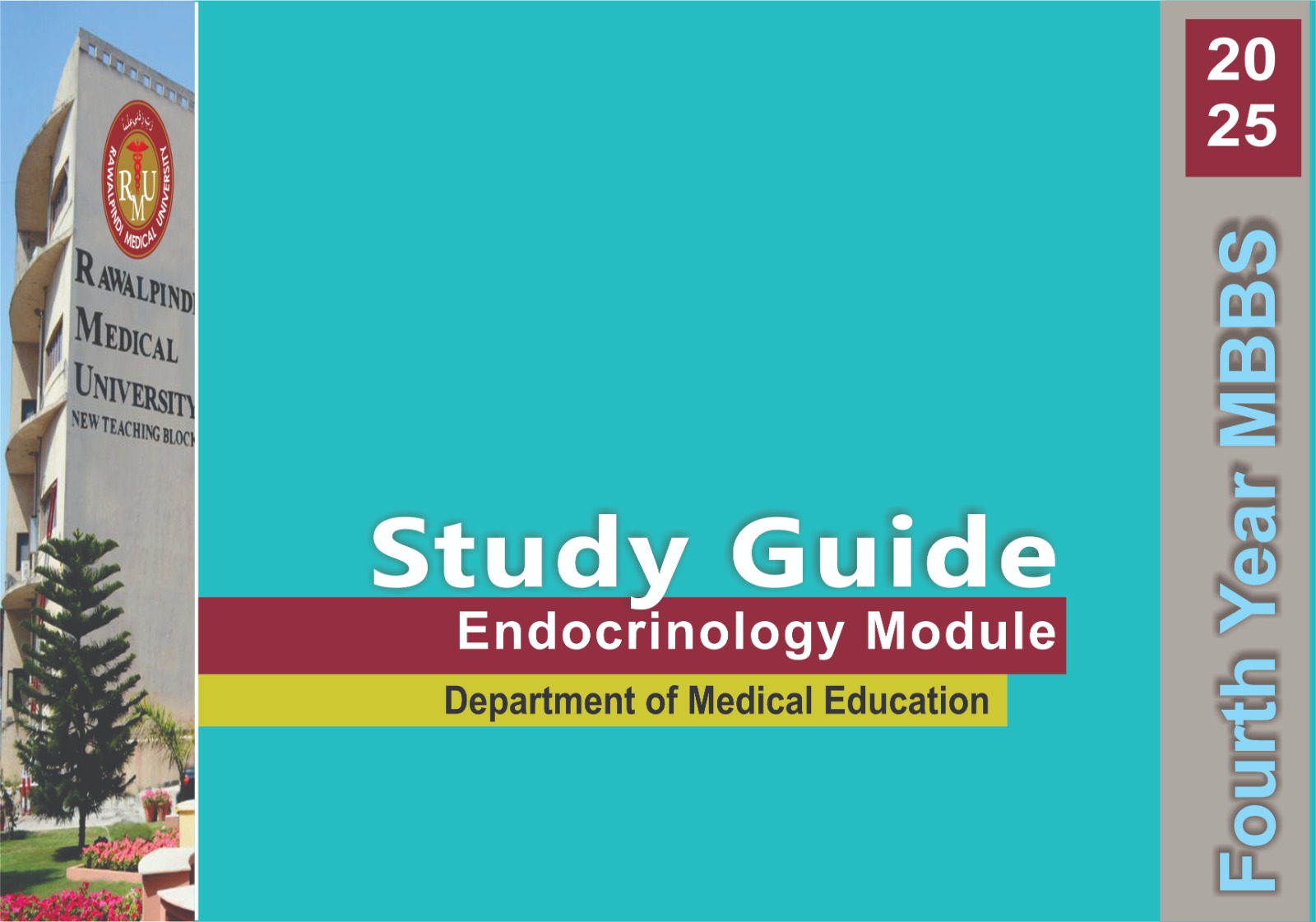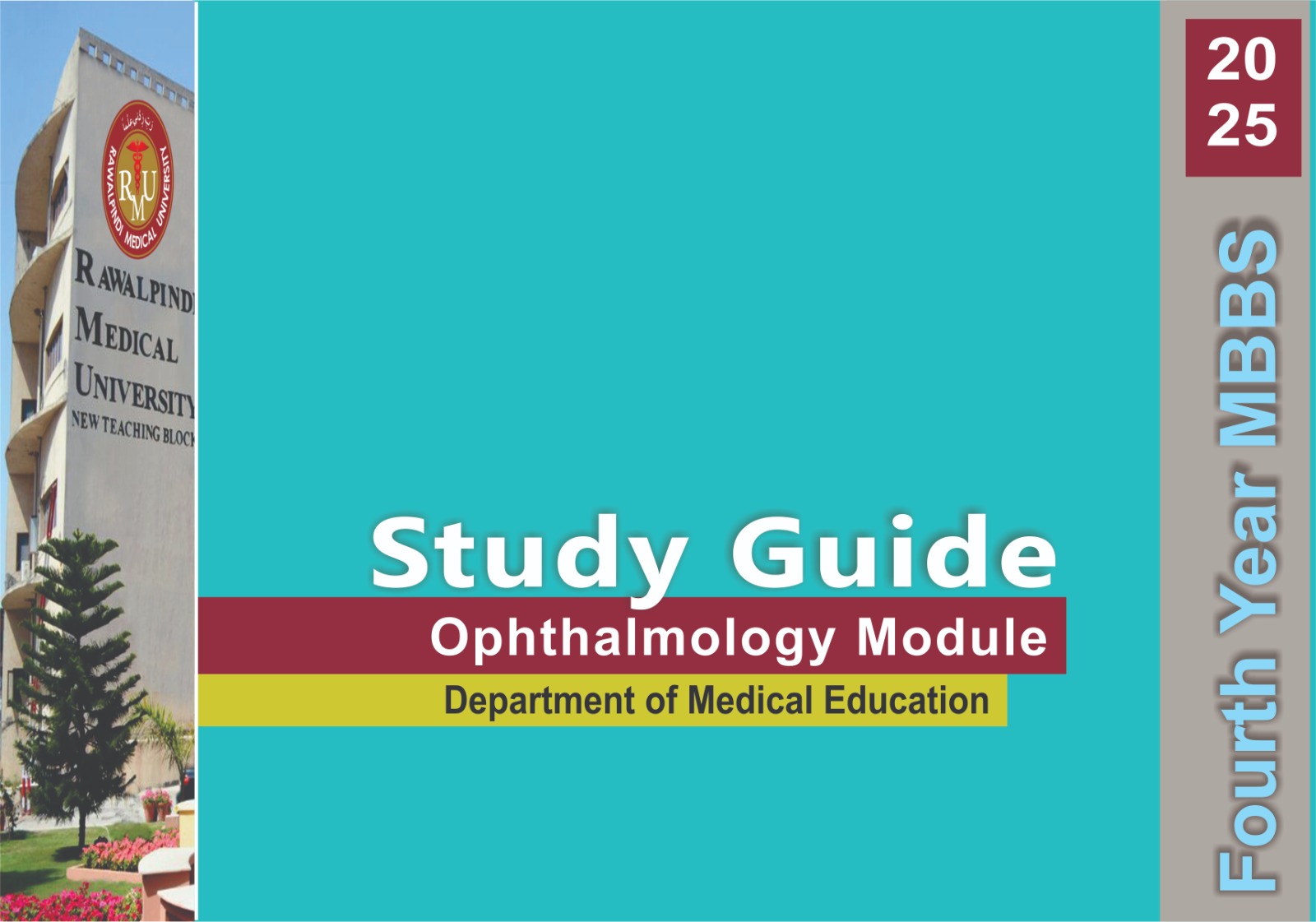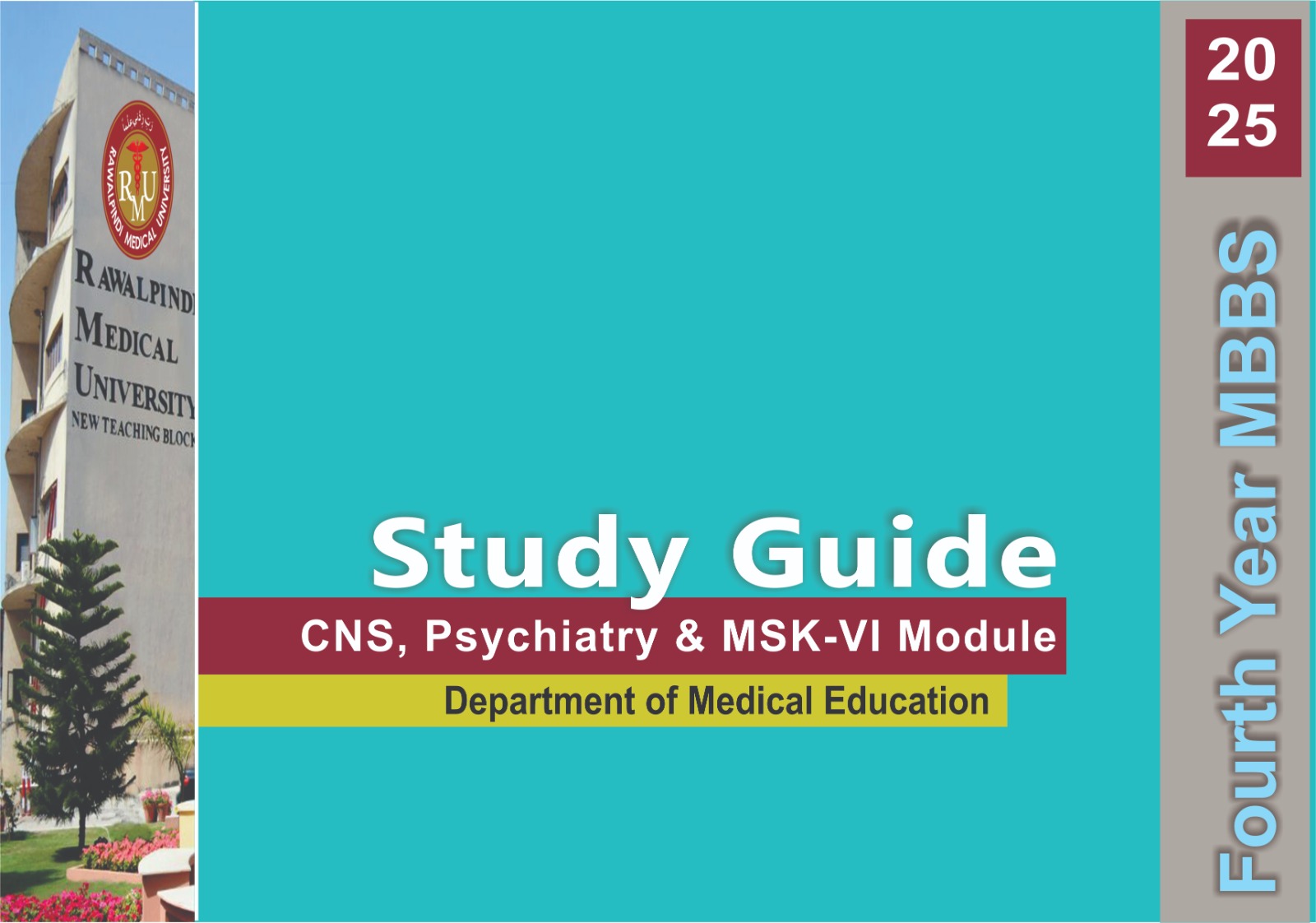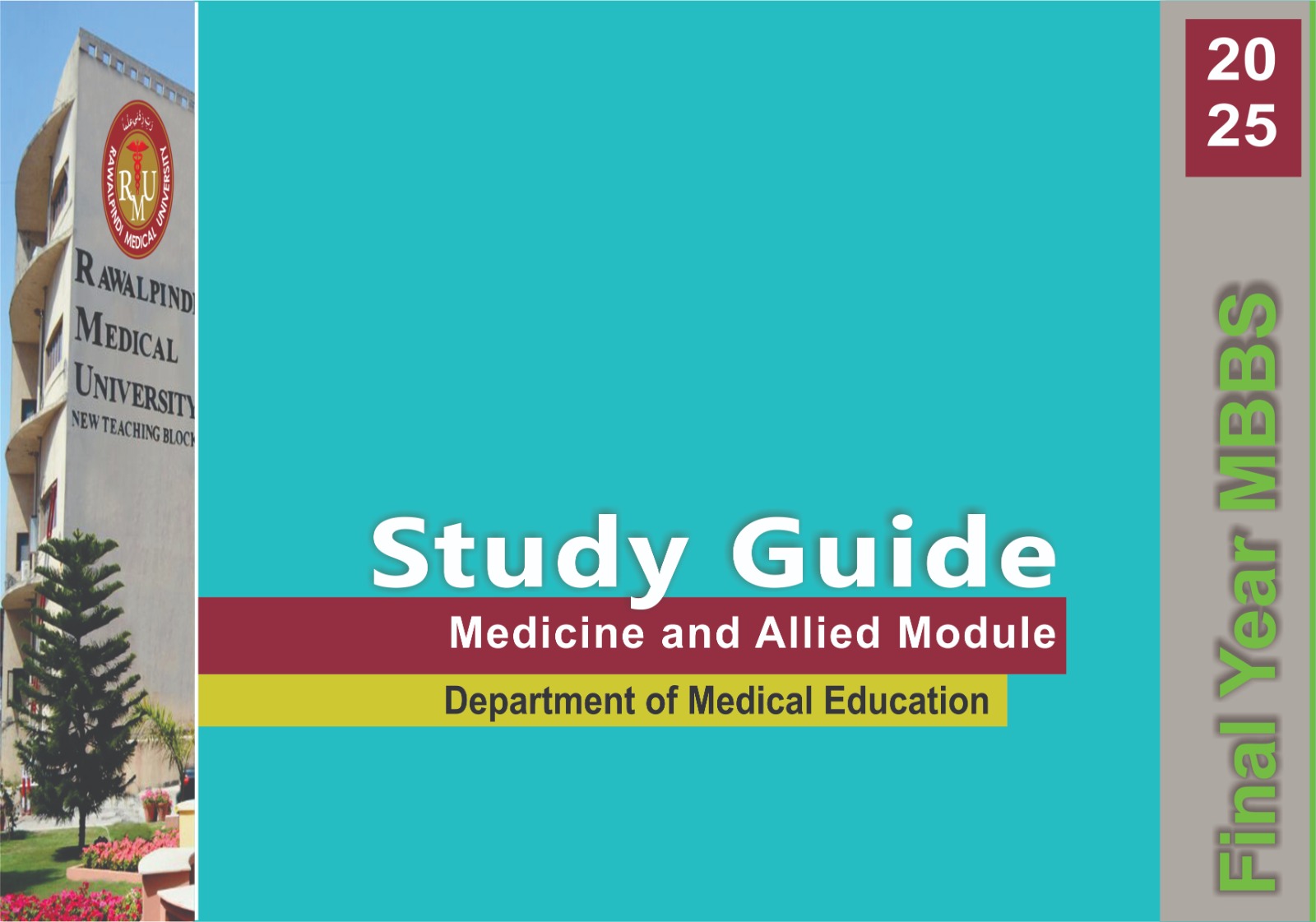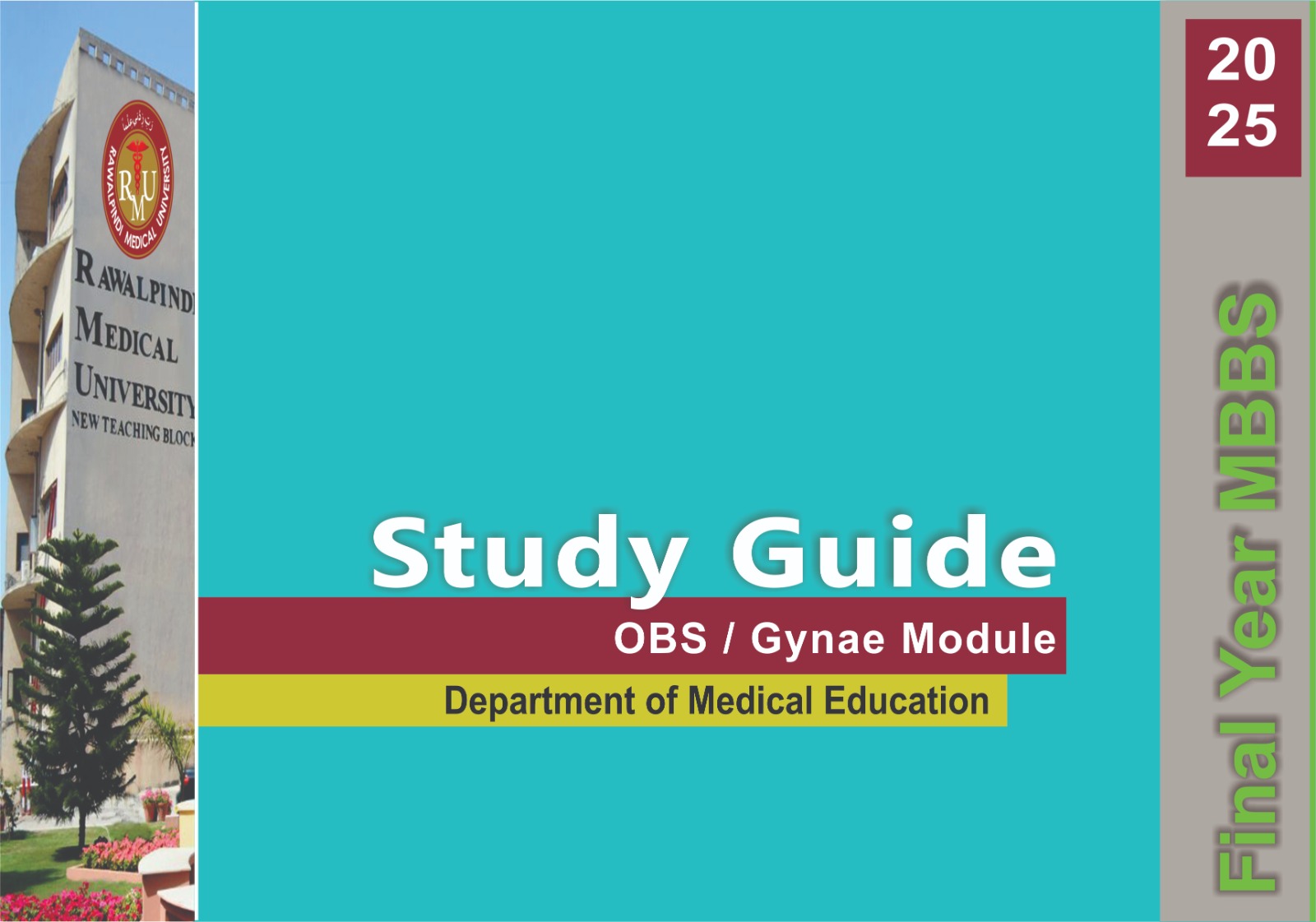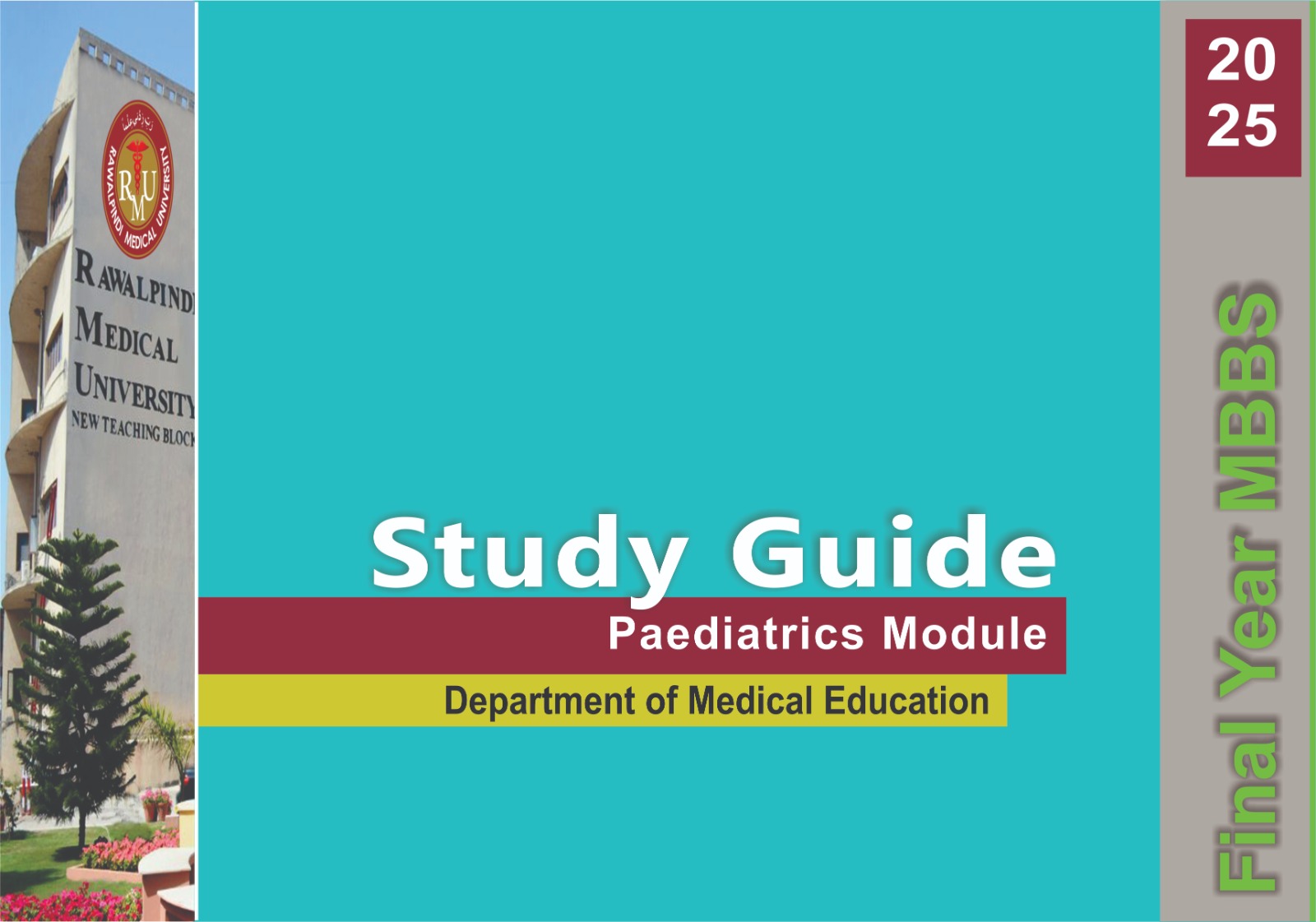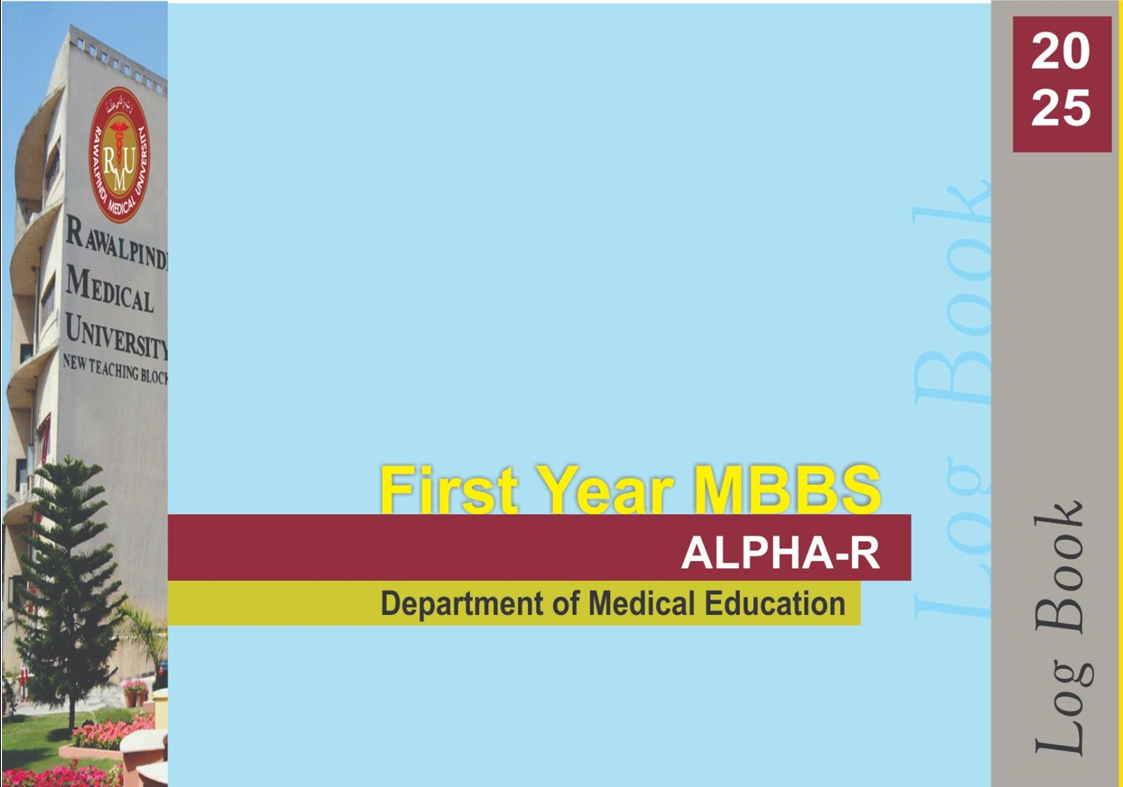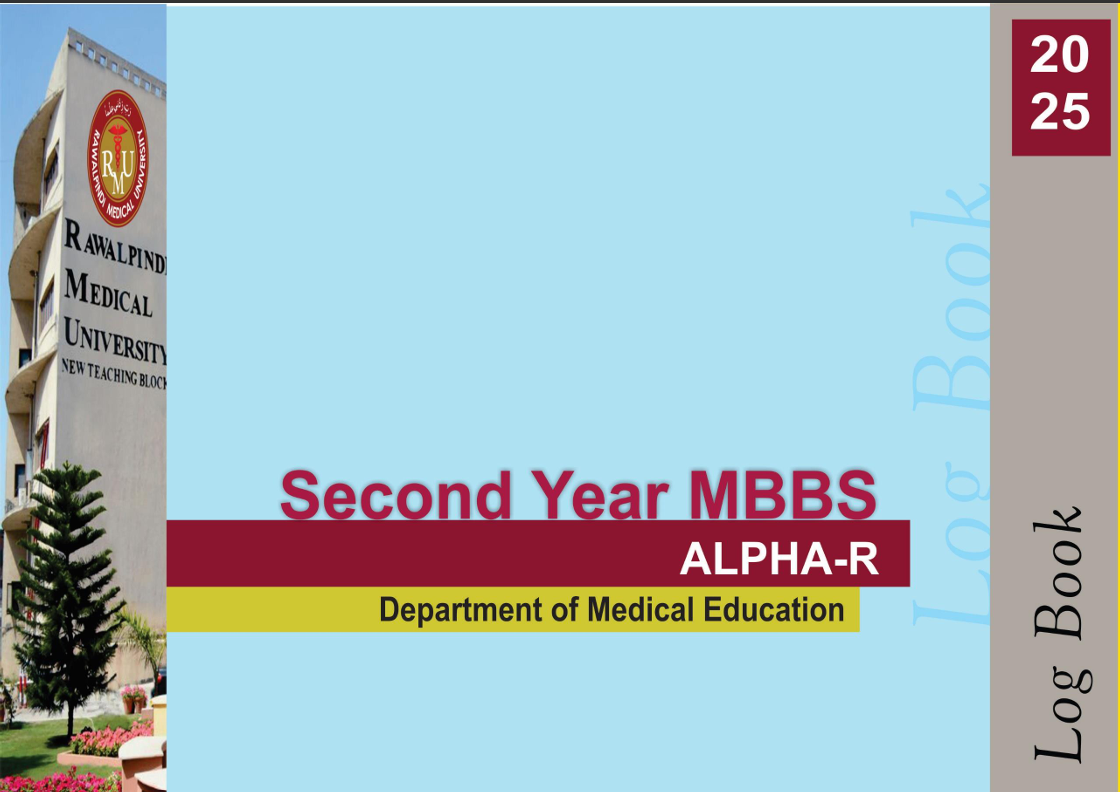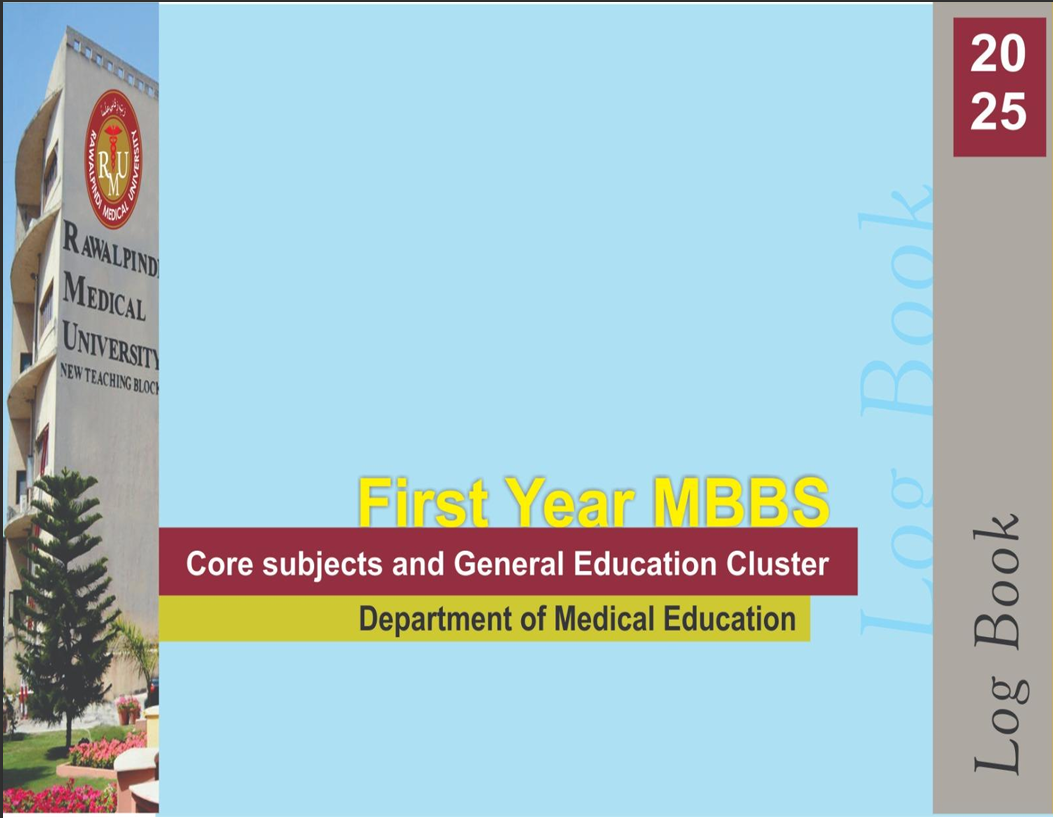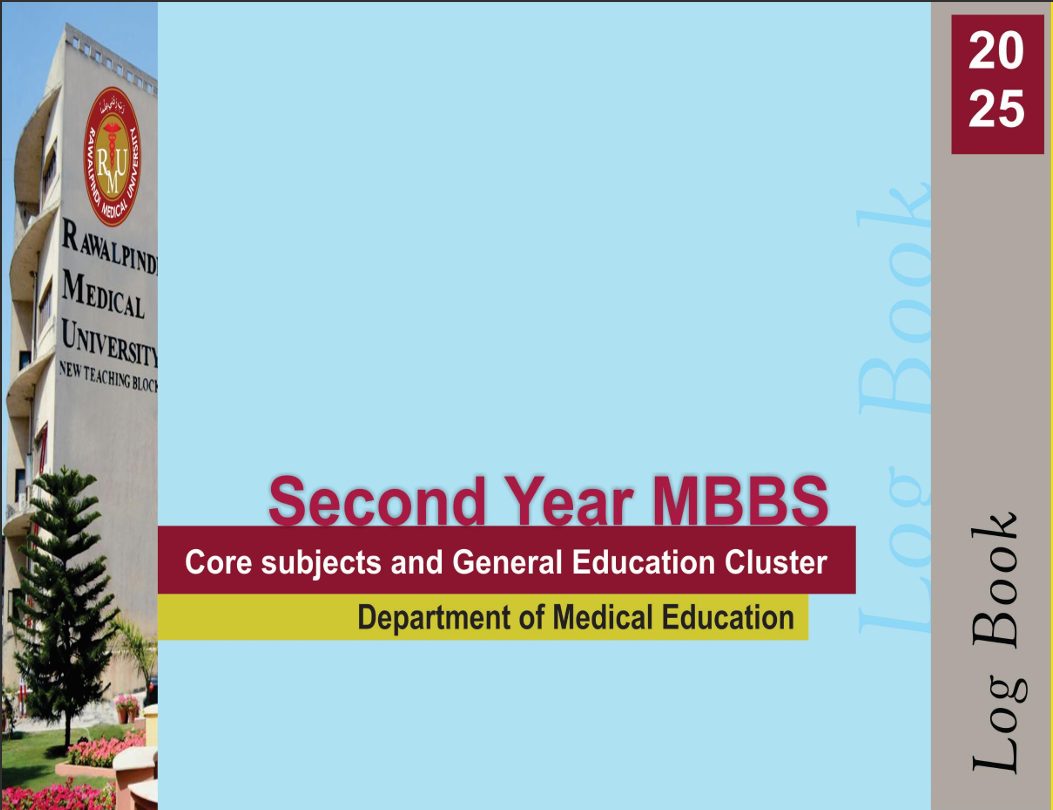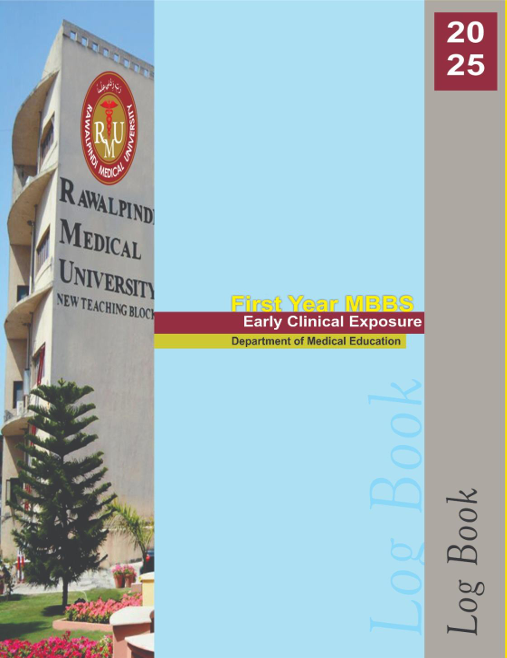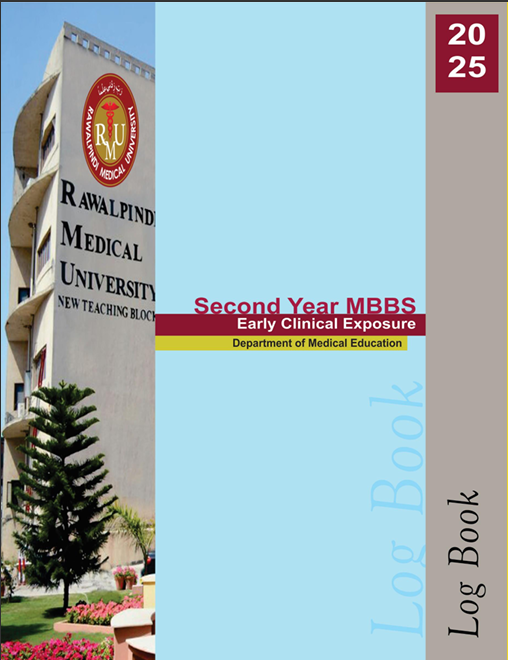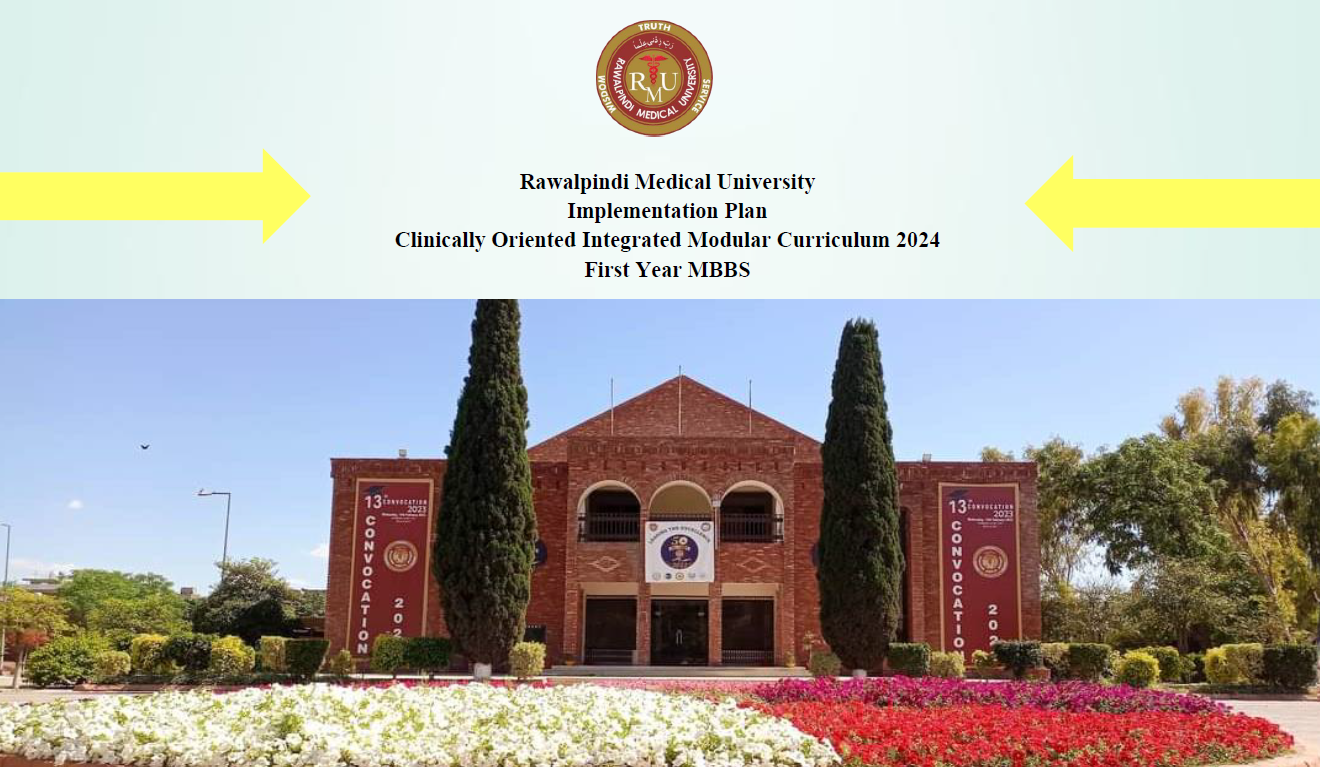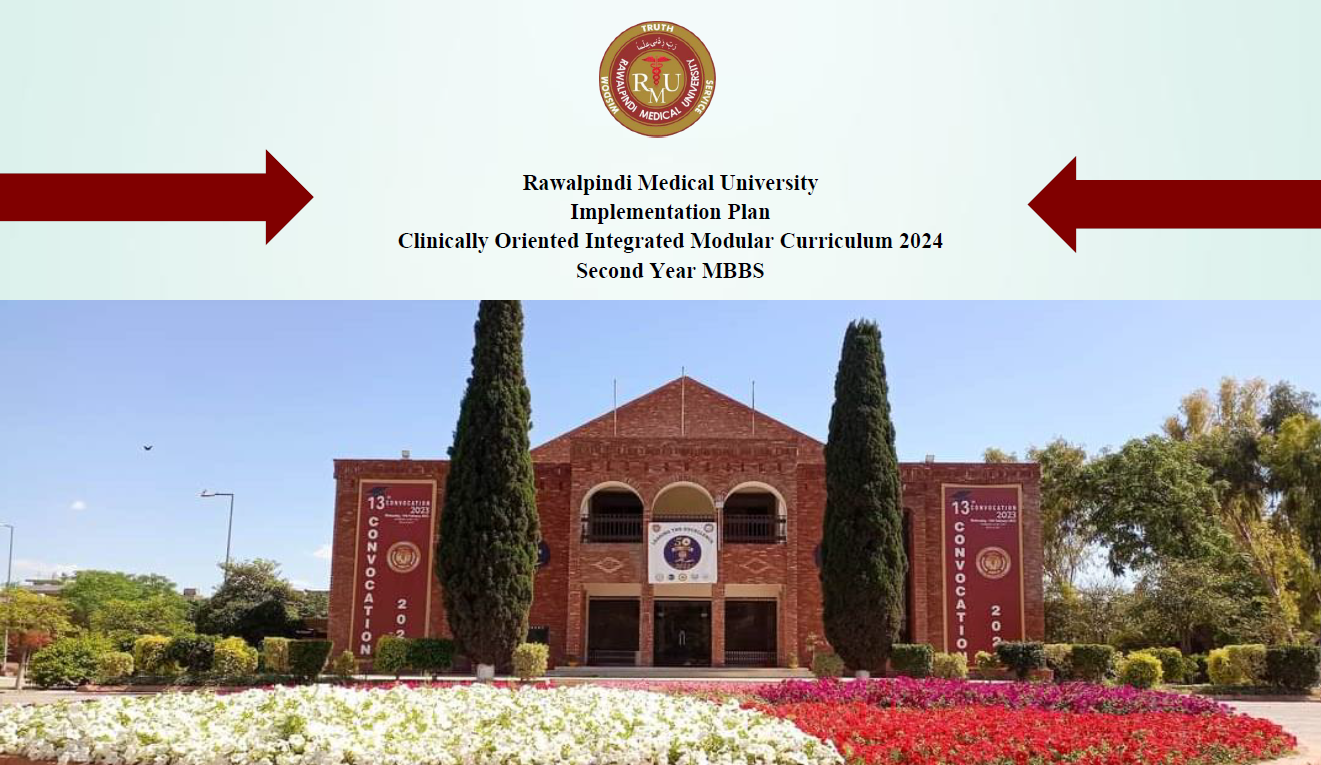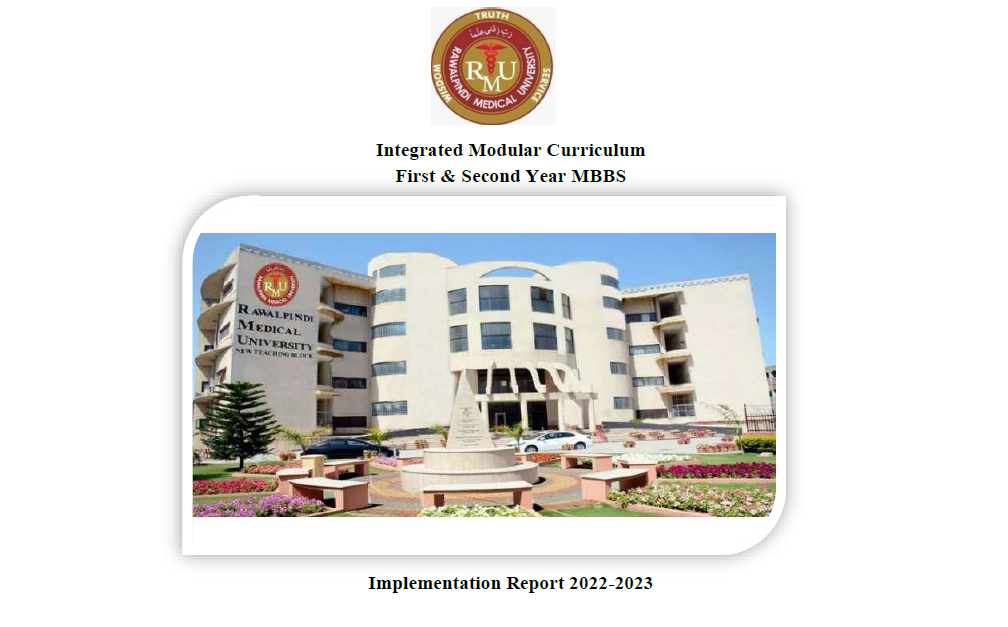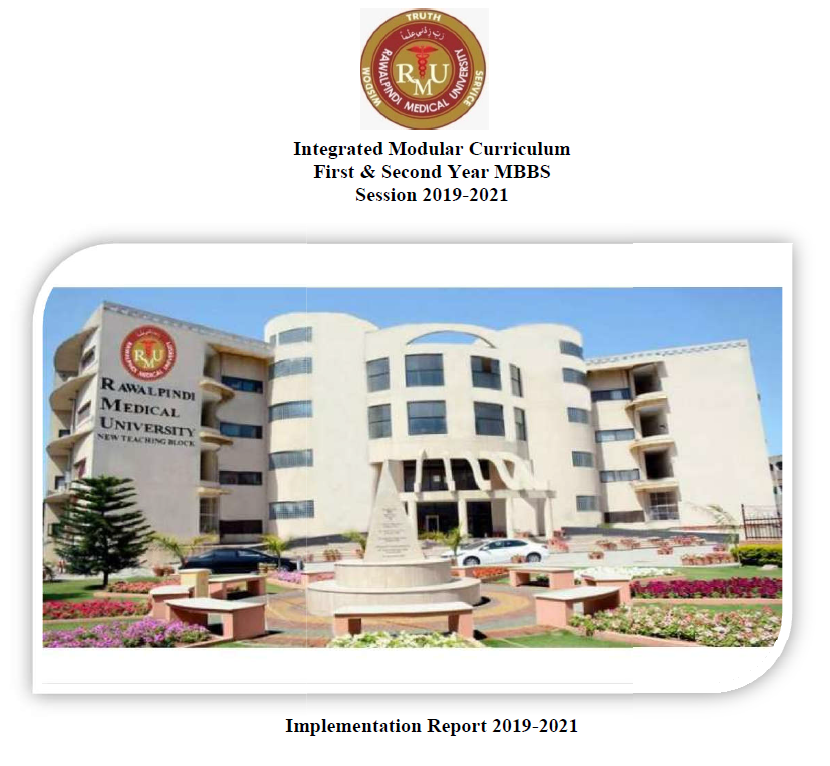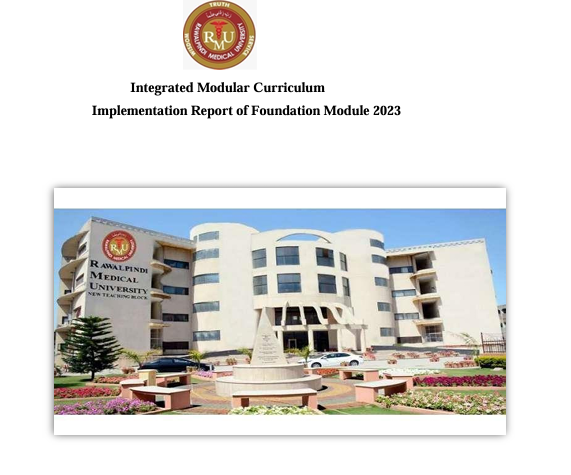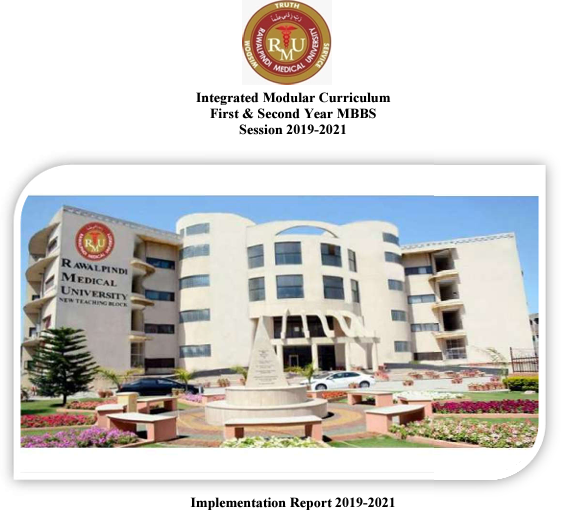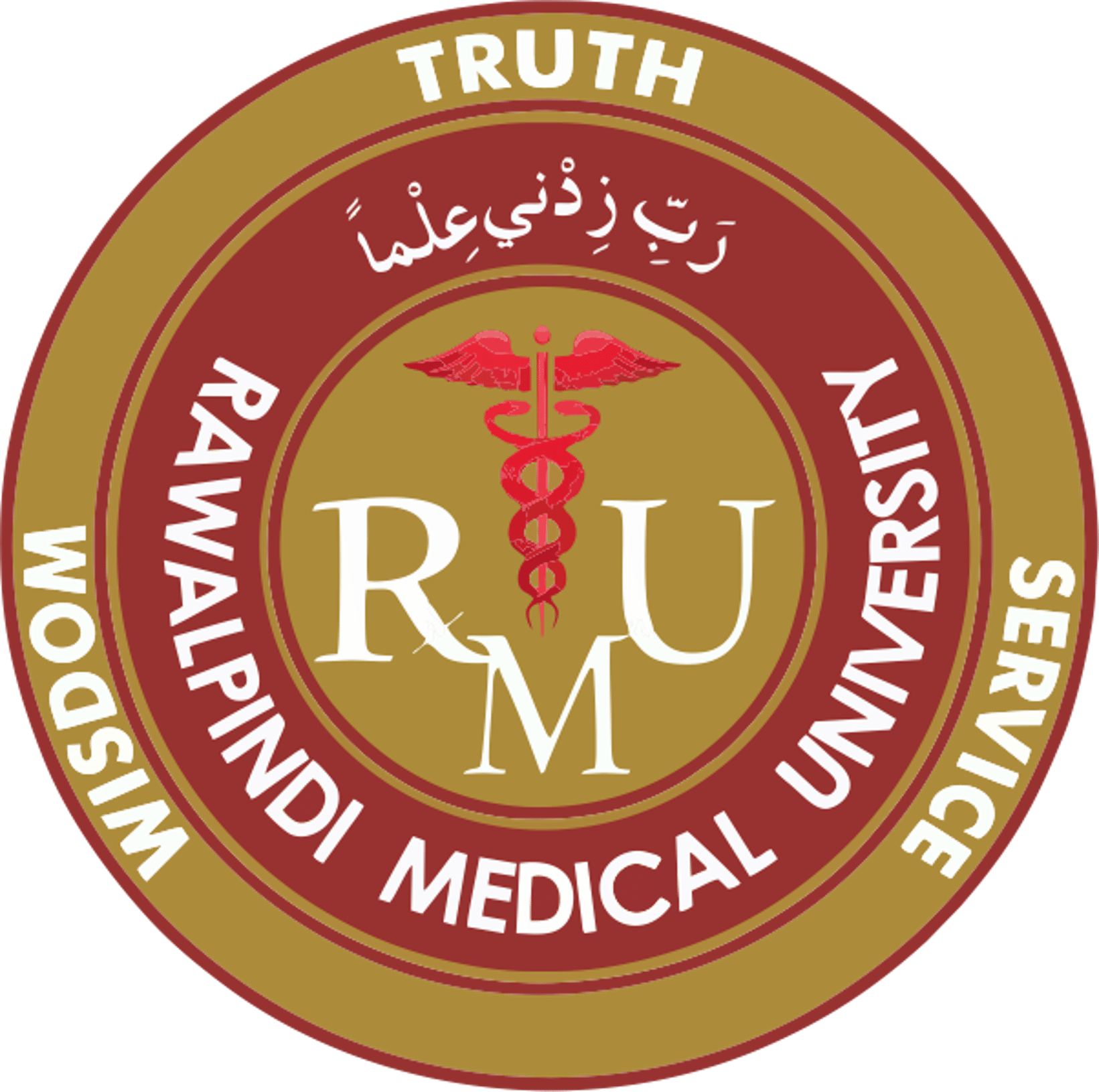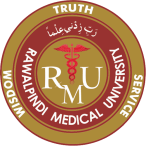
MBBS
(Bachelor of Medicine and Bachelor of Surgery Program)
The MBBS program at Rawalpindi Medical University (RMU) is a rigorous and innovative five-year comprehensive undergraduate degree program. A clinically oriented integrated modular curriculum, designed at level 7 of Harden’s Ladder is implemented in accordance with guidelines of WFME and PM&DC ensuring a comprehensive and cohesive learning experience for students.
The program is structured into modules and follows an annual system, which allows for an in-depth exploration of medical sciences. It emphasizes the importance of research and bioethics, incorporating them into the robust curriculum to prepare students for the ethical challenges and scientific advancements in the medical field.
Students also engage in clerkships during their clinical years, providing them with hands-on experience and practical skills essential for their future careers. This approach not only enhances their clinical competence but also fosters critical thinking and ethical decision-making.
Rawalpindi Medical University, is committed to excel in medical education, ensuring graduates are well-equipped to meet the demands of the healthcare industry and contribute positively to the global medical community.
Vision
Highly recognized and accredited centre of excellence in Medical Education, using evidence-based training techniques for development of highly competent health professionals, who are lifelong experiential learner and are socially accountable.
Vision
Highly recognized and accredited centre of excellence in Medical Education, using evidence-based training techniques for development of highly competent health professionals, who are lifelong experiential learner and are socially accountable.
Mission
To impart evidence-based research-oriented health professional education in order to provide best possible patient care and inculcate the values of mutual respect, ethical practice of healthcare and social accountability.
Mission
To impart evidence-based research-oriented health professional education in order to provide best possible patient care and inculcate the values of mutual respect, ethical practice of healthcare and social accountability.
Curriculum Reforms
Curriculum reforms in a medical university are imperative to align education with the dynamic landscape of healthcare. Rapid advancements in medical science, technology, and patient care necessitate a curriculum that reflects current knowledge and practices. Reforms should incorporate interdisciplinary learning, emphasizing communication skills, cultural competence, and the ethical dimensions of medicine. Integration of innovative teaching methods, such as simulation and technologyenhanced learning, prepares students for realworld challenges. Furthermore, a patientcentered approach and exposure to community health enhance the practical relevance of education. Curriculum reforms ensure graduates are well-equipped, adaptable, and responsive to the evolving needs of healthcare, ultimately enhancing the quality of medical professionals. The Rawalpindi Medical University uses a comprehensive Clinically Oriented Integrated Modular Curriculum that has been developed by the university with consultation of national and international subject experts.
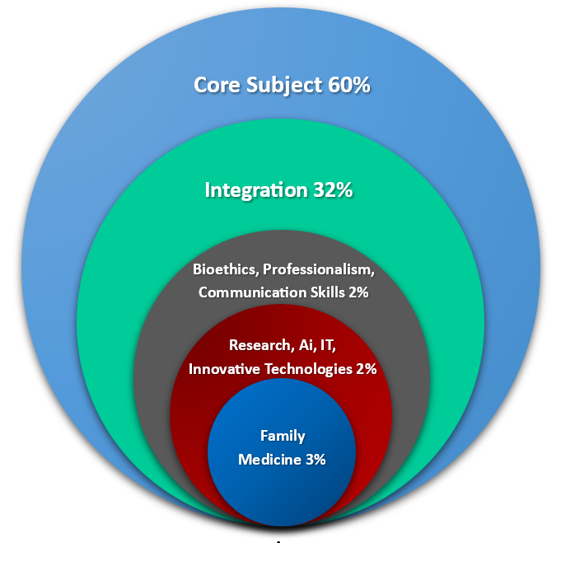
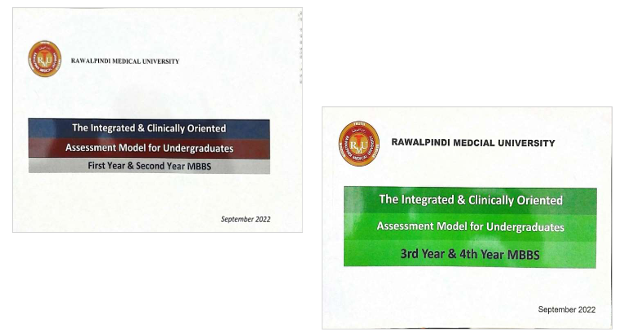
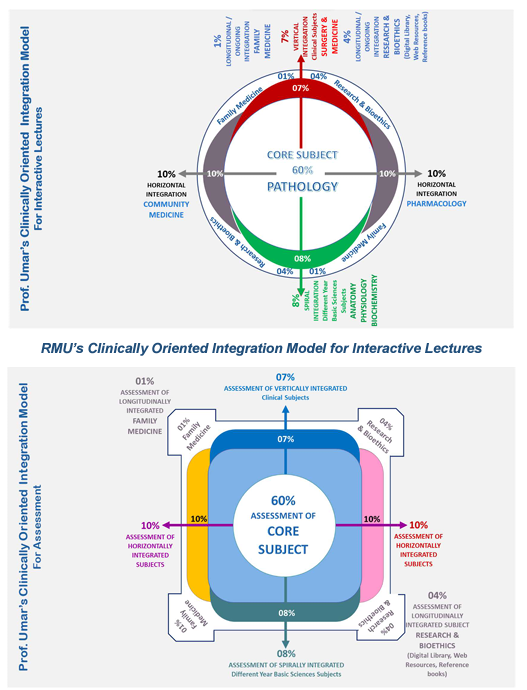
The university is unique in respect that it is has incorporated a detailed curriculum of Family Medicine, Bio-Ethics & Professionalism and Artificial Intelligence in its core curriculum to empower the students for the needs of the future. The university uses a carefully planned content delivery model that ensures proper integration at all levels. The assessments are also planned keeping in view the proper integration of all the components to meet the requirements of the curriculum. The university has made a comprehensive infrastructure for the assessment of the medical students at all levels ensuring that the health professionals of the future are equipped with the required competencies and skills to perform at their best in all scenarios across the globe. The structured assessment model of the university is called Mumtahin and it is tailored especially as per the requirements of the curriculum to evaluate the students in all domains of learning. The university also employs its Learning Management System for Continuous Internal Assessment of the students.
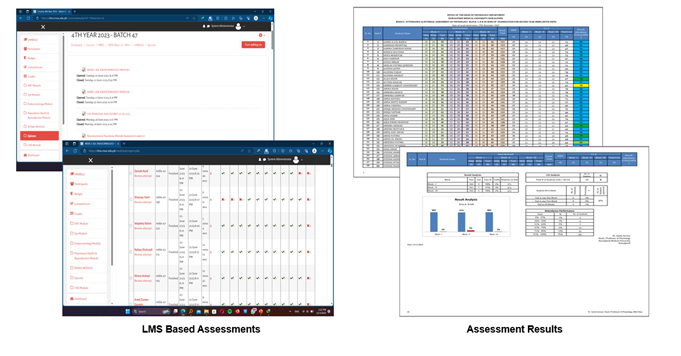
MBBS Curriculum Highlights
Shoemaker defines an integrated curriculum as “education that is organized in such a way that it cuts across subject matter lines, bringing together various aspects of the curriculum into meaningful association to focus upon broad areas of study.” There is an ongoing discussion about whether medical curriculum should be discipline based or integrated.
Most curricula for medical education have been integrated horizontally and vertically–-vertically between basic and clinical sciences. The Flexnerian curriculum has disappeared to permit integration between basic sciences and clinical sciences, which are taught throughout the curriculum. We have proposed a different form of integration where the horizontal axis represents the defined learning outcomes and the vertical axis represents the teaching of the sciences throughout the courses. We believe that a mere integration of basic and clinical sciences is not enough because it is necessary to emphasize the importance of humanism as well as health population sciences in medicine. It is necessary to integrate basic and clinical sciences, humanism, and health population in the vertical axis, not only in the early years but also throughout the curriculum, presupposing the use of active teaching methods based on problems or cases in small groups.
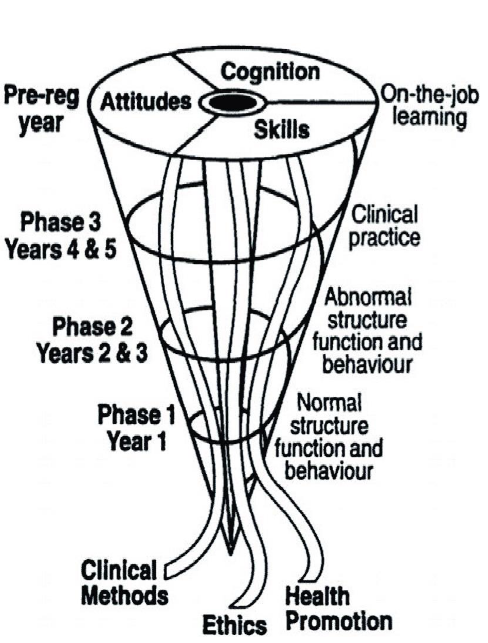
Spiral Integrated Medical Curriculum
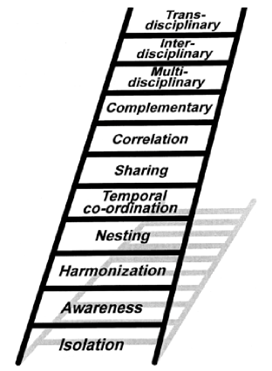
Integration ladder
At Rawalpindi Medical University, our curriculum for the MBBS program adheres to the sophisticated model of Correlation, recognized as level 7 on Harden’s scale of integration. This approach is foundational throughout the initial four years of the medical education journey. Our emphasis predominantly remains on discipline-specific education, where courses focused on individual subjects constitute the majority of the curriculum. This traditional structure ensures a robust foundation in the core medical sciences.
Within this discipline-oriented framework, we introduce an innovative element—an integrated teaching session. These sessions are strategically designed to bridge various subjects by identifying and connecting areas of mutual relevance. This method facilitates a holistic learning experience by correlating distinct disciplines and embedding them within a clinical context. This integration enhances the students’ understanding and application of medical concepts, making the learning process both comprehensive and applicable to real-world scenarios.
At RMU we aim to produce seven-star doctor according to PMDC Competencies having the generic competencies of “Skill, Knowledge, Community Health Promoter, Critical Thinker, Professional, Scholar, Leader and Role Model”, Rawalpindi Medical University has introduced modular integrated undergraduate curriculum as being first public sector university. These competencies are further outlined by various enabling traits specifying knowledge, skills, and attitude.
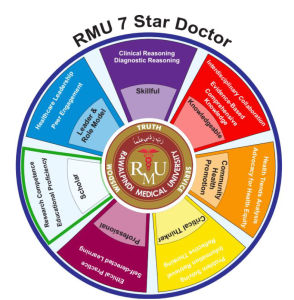
RMU 7 Star Doctor
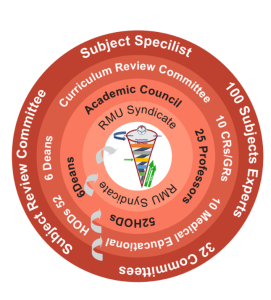
RMU Curriculum Development
The curriculum development process at Rawalpindi Medical University was an intricate and well-orchestrated endeavor, meticulously designed to create an advanced and relevant curriculum. This process maintained a strong linkage with existing educational norms and professional practices while introducing innovative elements.
Here’s a more detailed breakdown of the process:
Syllabi Development and Expert Consultation: The first stage involved the formation of subject-specific advisory committees, engaging over 34 experts. Each committee focused on curating and refining the syllabi for their respective subjects. Their primary task was to incorporate all critical elements pertinent to each subject while discarding any obsolete or irrelevant content.</p<
Curricular Committee Review: The next phase brought together a 26-member Curricular Steering Committee, consisting of medical educationists This committee played a pivotal role in scrutinizing and endorsing the overarching structure for a ‘Modular Integrated Curriculum’ spanning five years. Their focus areas included the identification and placement of modules, clerkship planning, and ensuring that the curriculum aligned seamlessly with various assessment techniques.
Theme Identification and Modular Design: In this phase, 18 medical educators engaged in a dynamic and collaborative exercise. They meticulously arranged syllabi elements into specific modules according to these themes. This step was crucial in determining the topics for each learning
objective and allocating appropriate hours for each curriculum component.Finalization of Modules: A select group comprising Lead Medical Educationists and members from the Department of Medical Education undertook the final step of module finalization. This involved setting the structure, themes, time allocation, syllabi content, and emphasizing clinical relevance for each module.
Statutory Approval and Integration: The finalized modules and their associated assessment policies underwent a rigorous approval process through the Academic Council, and the Syndicate. Feedback and recommendations gathered during this statutory process were meticulously integrated into the curriculum guidelines.
6. Adaptive and Feedback-Oriented Approach: Recognizing the importance of adaptability and continuous improvement, the university incorporated a system for regular feedback and curricular evaluations. This system ensures that the curriculum remains dynamic, accommodating necessary updates and refinements as needed.
7. Curriculum 2024 – A Modular Integrated Outcome-Based Approach: The developed Curriculum is a testament to a comprehensive, outcome-based educational strategy. This strategy enables affiliated colleges to implement the curriculum effectively, respecting each institution’s unique identity and vision, despite variations in available resources.
8. Integrative and Contemporary Educational Strategies: The curriculum emphasizes both horizontal integration across various disciplines and vertical integration throughout different educational stages. This integrative approach is in line with modern educational theories, like Meizrow’s concept of transformative learning and strategies for early clinical exposure. Such an approach is aimed at promoting professional growth and practical knowledge application among students.
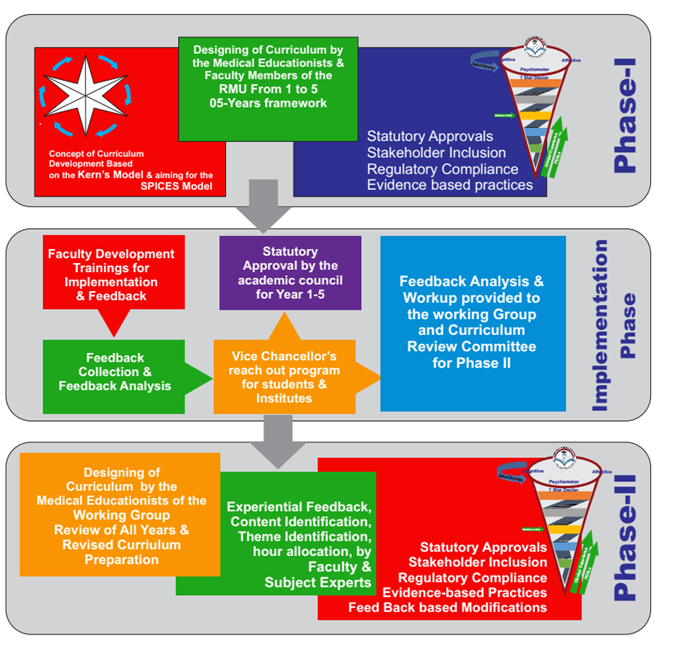
Phases of Curriculum Development
Two designs of the MBBS curriculum are acceptable by PMDC. System Based (Preferred) with horizontal and vertical integration. The curriculum of each Clinical Discipline must emphasize―Health Promotion and Disease Prevention‖, besides Curative Health Care. RMU has opted for system based modular curriculum.
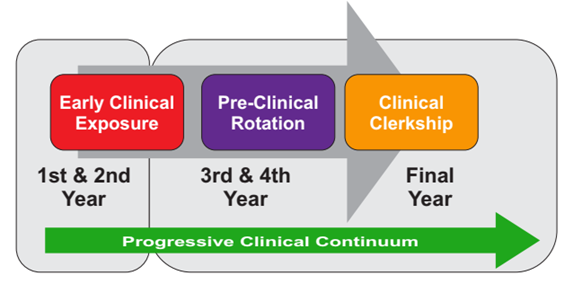
Undergraduate Curriculum Plan
The Module should explicit makes:
Title of Module of a System 2) Learning Objectives, 3) Allocated Time in weeks/Hours and Credit Hours, 4) the name of the Coordinator, 5) Teaching Faculty (regular/visiting) 6) Learning Sites, 8) Modes of Information Transfer, 9) List of the Recommended Books, 10) Assessment strategies, and 11) Strategies for Monitoring and Improvement.
Learning Objectives: Learning Objectives are defined for each module. They are Specific, Measurable, Achievable, Relevant to the desired competencies (Outcomes) of the PMDC Curriculum and Time bound (SMART), related to level of the learner and the three main domains.
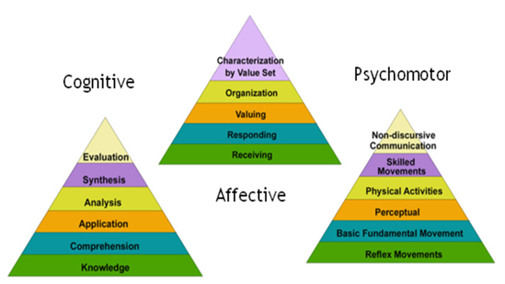
Blooms Taxonomy for Learning Objectives
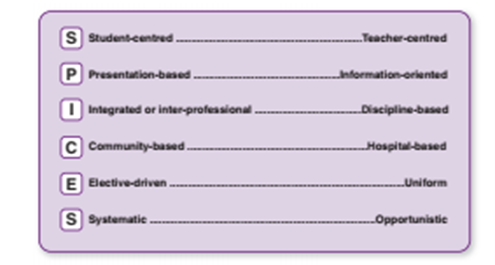
Spices Model of Educational Strategies
The way medical curricula are structured and taught has undergone significant changes in recent decades. New approaches to education have resulted in a more cohesive curriculum that emphasizes the teacher’s role as a facilitator of learning rather than a source of information. Students are now seen as active participants in the learning process rather than mere recipients of knowledge. The responsibility for curriculum planning has shifted from individual departments to committees representing different stakeholders. Key issues that need to be addressed include the mission of the medical school, learning outcomes, curriculum content, course sequence, educational strategies, teaching and learning methods, assessment procedures, educational environment, communication about the curriculum, and management of the process. The SPICES model describes a range of educational strategies that move from student-centered to teacher-centered, problem-based to information-centered, integrated to discipline-based, community-based to hospital-based, and from electives to uniform and systematic to opportunistic.
Rawalpindi Medical University recognizes the importance of collaboration in enhancing medical education. In order to achieve this, the university has established a collaborative approach among different stakeholders, including students, faculty, healthcare professionals, and the community.
One of the ways that Rawalpindi Medical University fosters collaboration is by implementing horizontal and vertical integration in the medical curriculum on the continuum of the integration ladder. (Figure 2) By integrating subjects that are normally taught in the same phase of the curriculum, such as anatomy, physiology, biochemistry, surgery, paediatrics, obstetrics, and gynecology, students gain a more comprehensive understanding of medical concepts. Moreover, students are introduced to patients from the first year of the curriculum, allowing them to apply their knowledge in clinical settings.
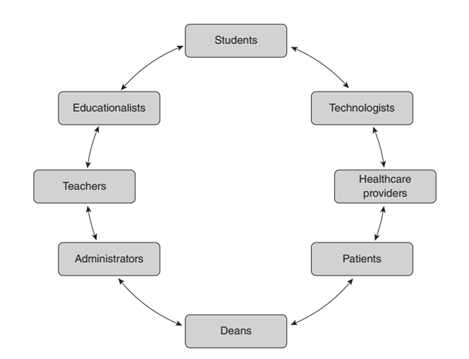
The stakeholders in curriculum development
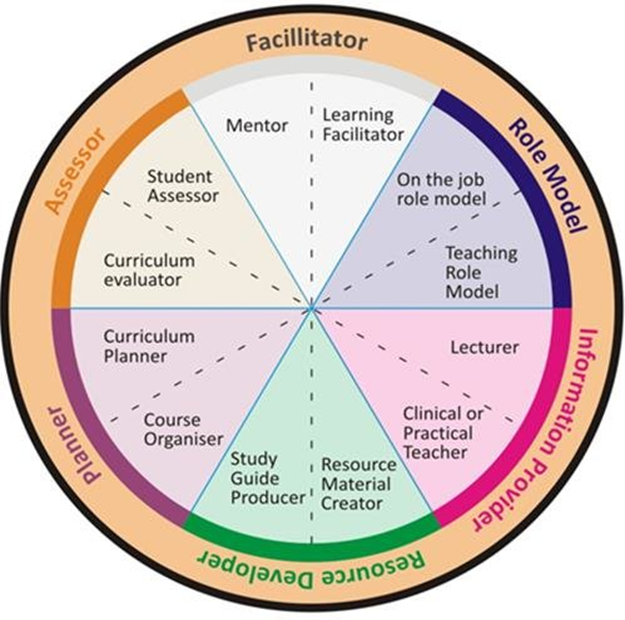
Roles of a Medical Teacher
Rawalpindi Medical University places great importance on the role of the teacher in the success of a curriculum. We understand that the input of the teacher is as significant, if not more significant, than the design of the curriculum itself. Therefore, we prioritize the training and development of our faculty through a regular faculty development program to ensure that they are equipped with the necessary knowledge and skills to effectively teach our students.
Our teachers play multiple roles in the curriculum, including that of information provider, role model, facilitator of learning, assessor of student progress, and curriculum planner. (Figure 4) They are not simply lecturers, but rather mentors and guides who help our students navigate the complex world of medicine. They work tirelessly to create an educational environment that supports the learning of our students and encourages appropriate learning behavior.
Our teachers also serve as facilitators of learning, guiding our students to access, select, and evaluate a wide range of resources that will help them achieve their learning outcomes. They work with individual students to support, motivate, and inspire them, promoting a sense of ownership of the course and their studies.
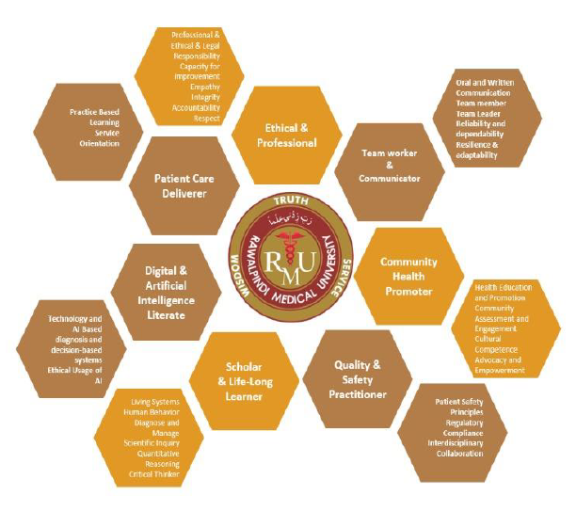
RMU Competency Framework 2025
Core Curriculum
Spiral Curriculam
Longitudinal Curricula
Study Guides
First Year
Second Year
Third Year
Fourth Year
Final Year
Teaching & Learning strategies
- Large Group Interactive Session (LGIS)
- Small Group Discussion (SGD)
- Self-Directed Learning (SDL)
- Case Based Learning (CBL)
- Problem- Based Learning (PBL)
- Skill Labs/Practicals (SKL)
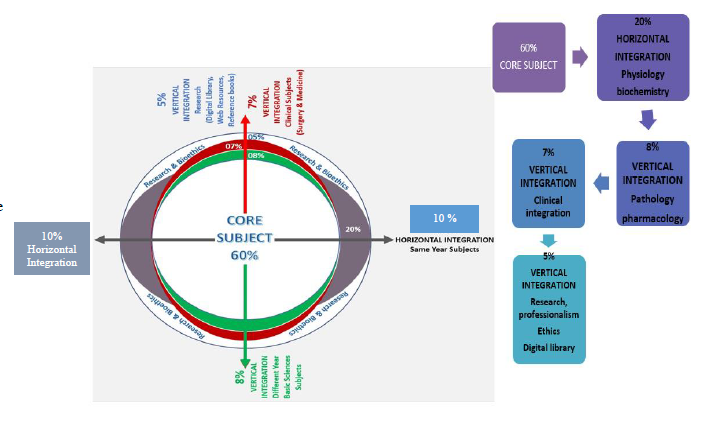
Academic Calendar
Time Tables
Logbooks
Implementation Plans
Templates and Samples for Implementation
Template for CMS Attendance
Sample Assessments
Admission Eligibility Criteria
The candidates applying for admission against any category of seat must have passed the F.Sc. Pre-Medical) examination from a Board of Intermediate and Secondary Education in Pakistan with at least 60% unadjusted marks (720/1200) or passed an examination of Foreign University/Board which in scope and standard is found equivalent to the F.Sc (Pre-Medical) examination of Pakistan subject to the following:
The applicant has passed, obtaining minimum 60 percent marks, in Higher Secondary School Certificate (HSSC) Pre-Medical Group or equivalent examination having minimum twelve years of education.
The applicant has passed an examination of a course from a foreign university or examining body or foreign education system, and such course must have been duly certified by the Inter-Boards Coordination Commission (IBCC) as equivalent to Higher Secondary School Certificate (HSSC) or Intermediate level of Pakistan with minimum 60 percent marks after equivalence.
OrIt shall be the responsibility of the candidates having foreign qualifications to settle their cases with IBCC and should get equivalence certificate from IBCC for recognition of their qualification and score.
A candidate shall not be eligible for admission if he/she has not studied and passed the subjects of Chemistry, Biology and either Physics or Mathematics in HSSC or equivalent 12th grade examination recognized in Pakistan.
For equivalence issues, please contact IBCC Head Office in Islamabad or
Regional Offices inLahore, Karachi, Peshawar, Quetta and Bahawalpur or visit Website: https://ibcc.edu.pk
Admission Documents
MBBS Policies
Assessment Policy
Attendance Policy
